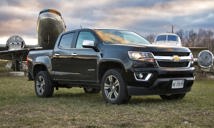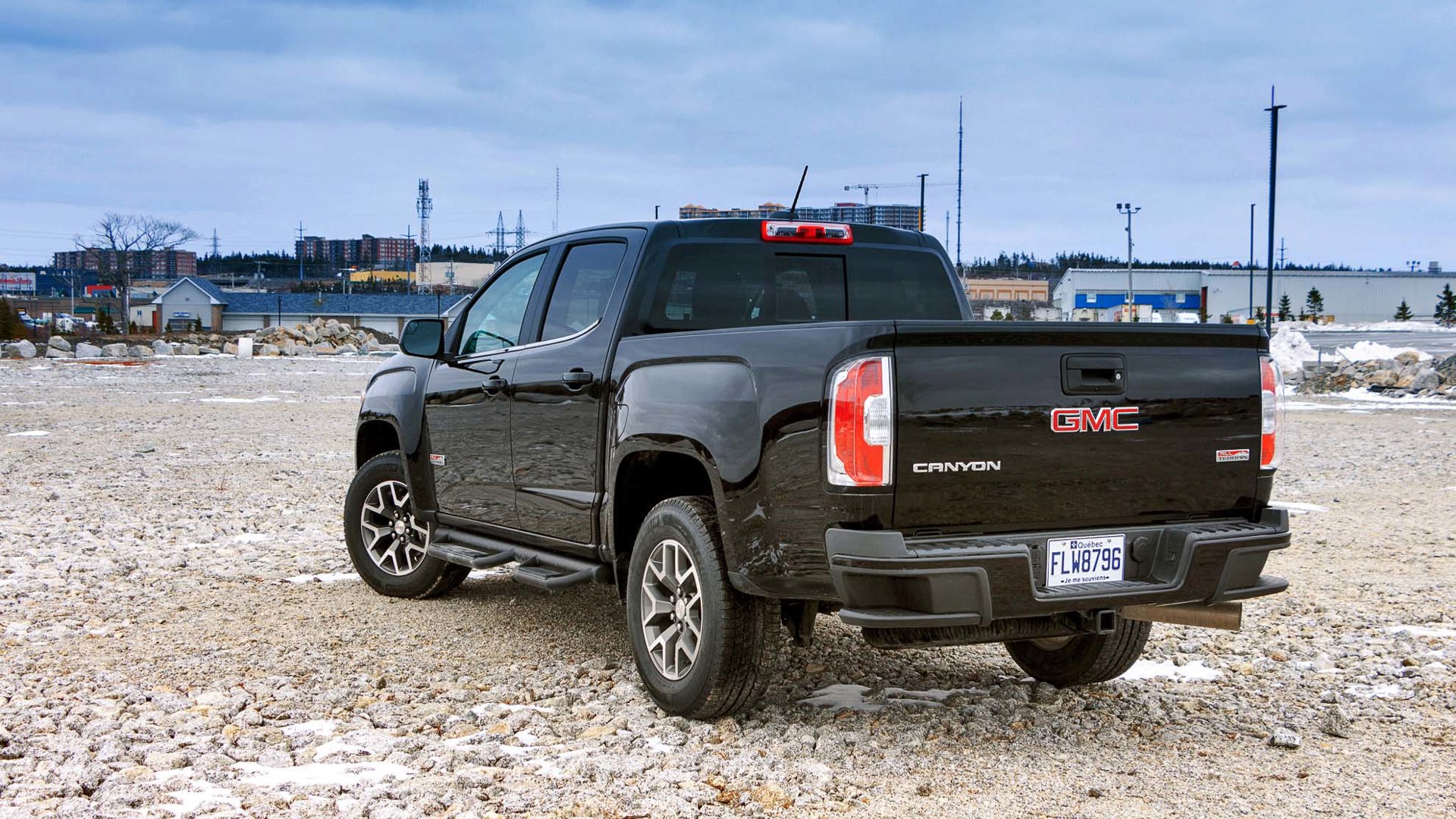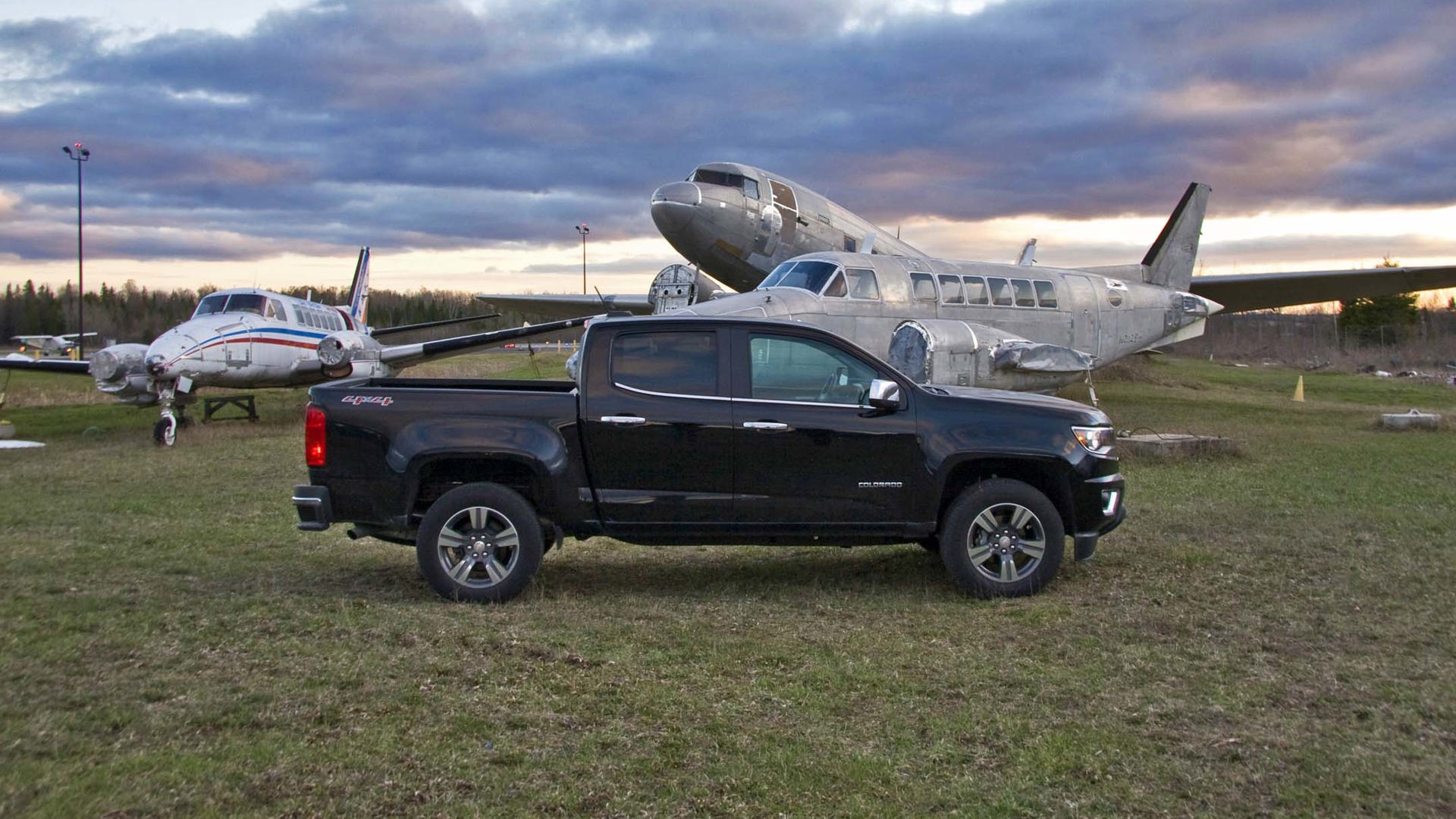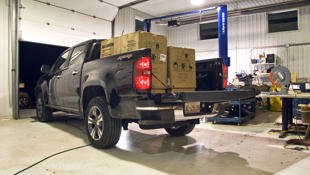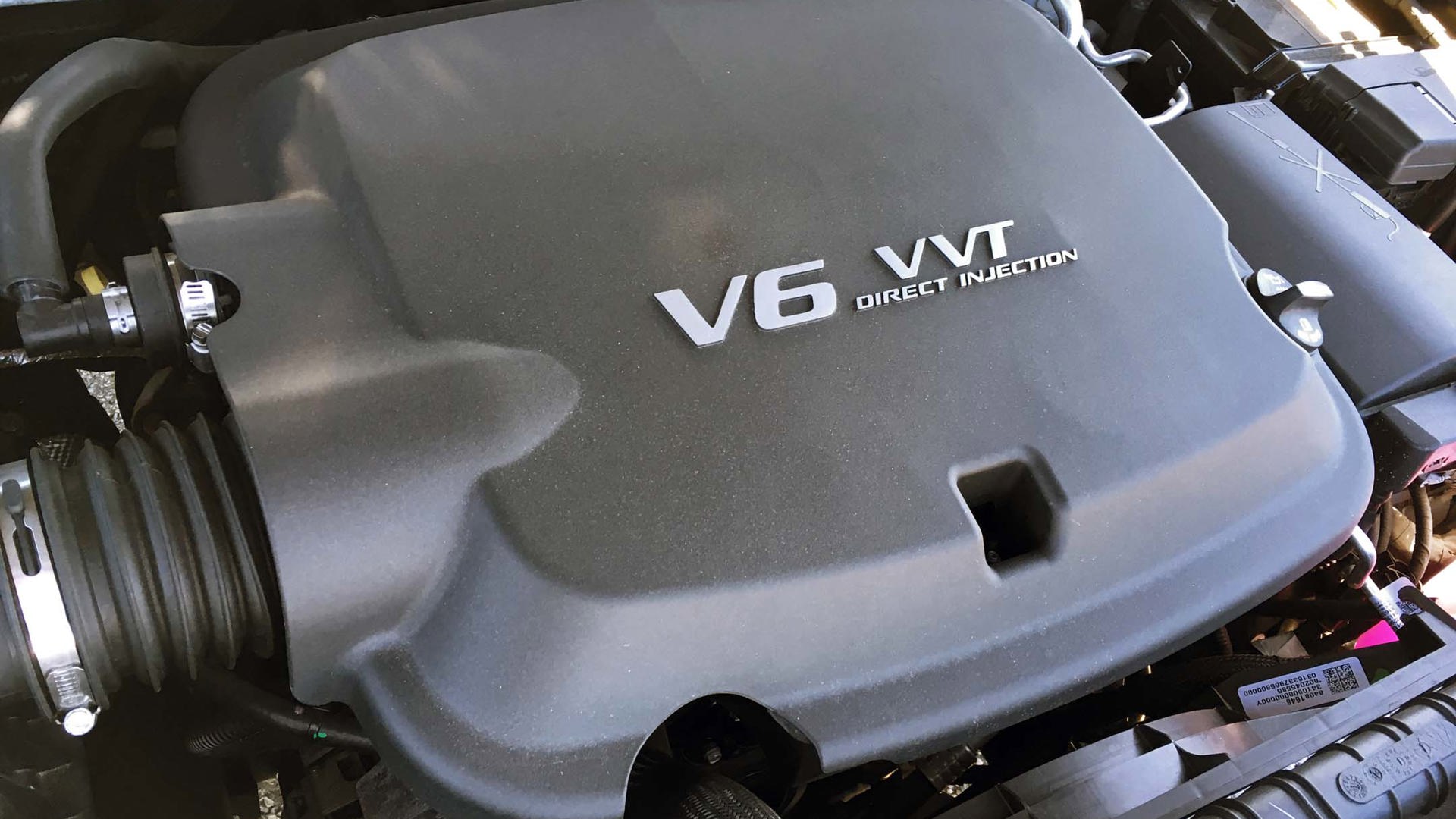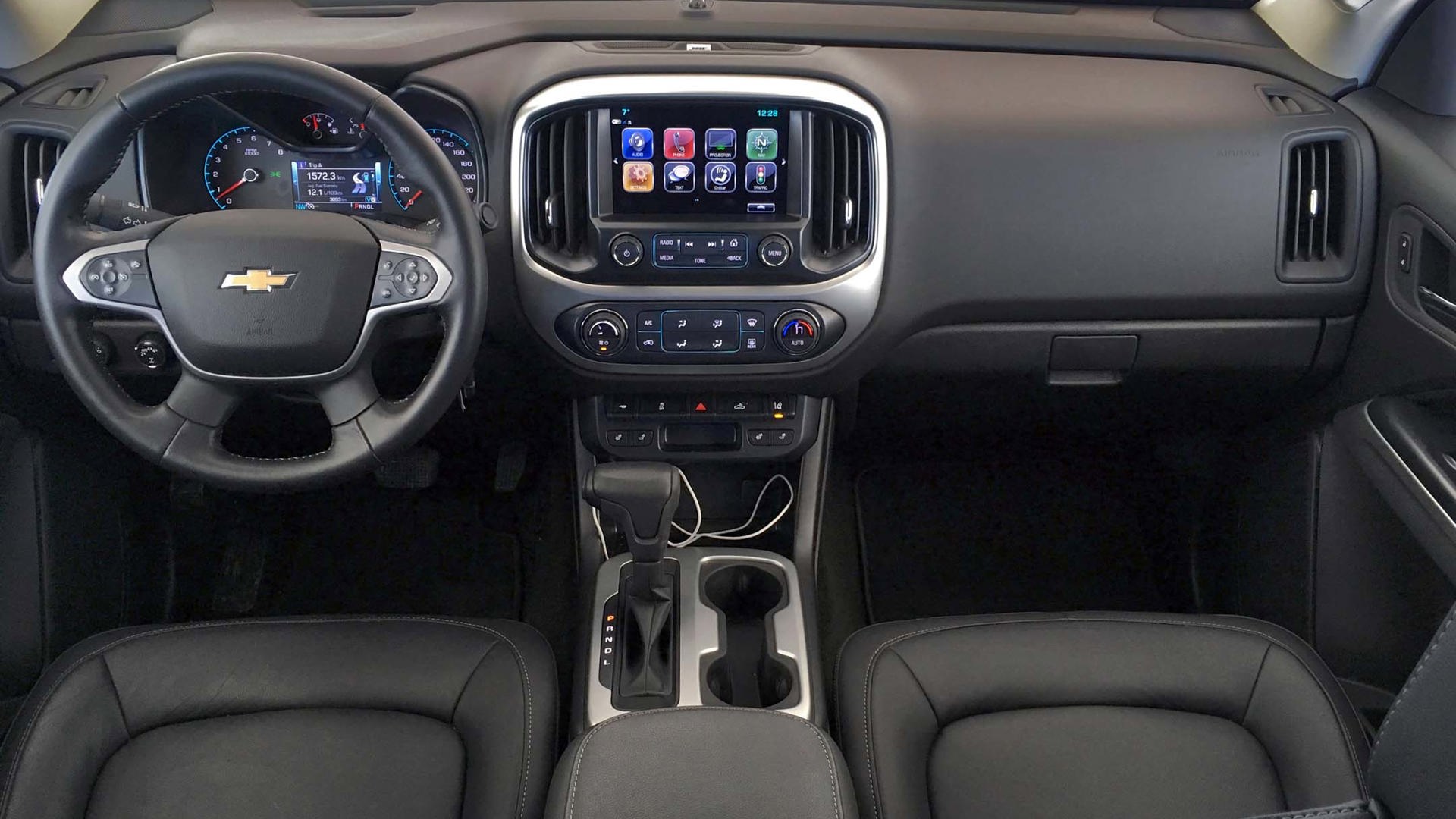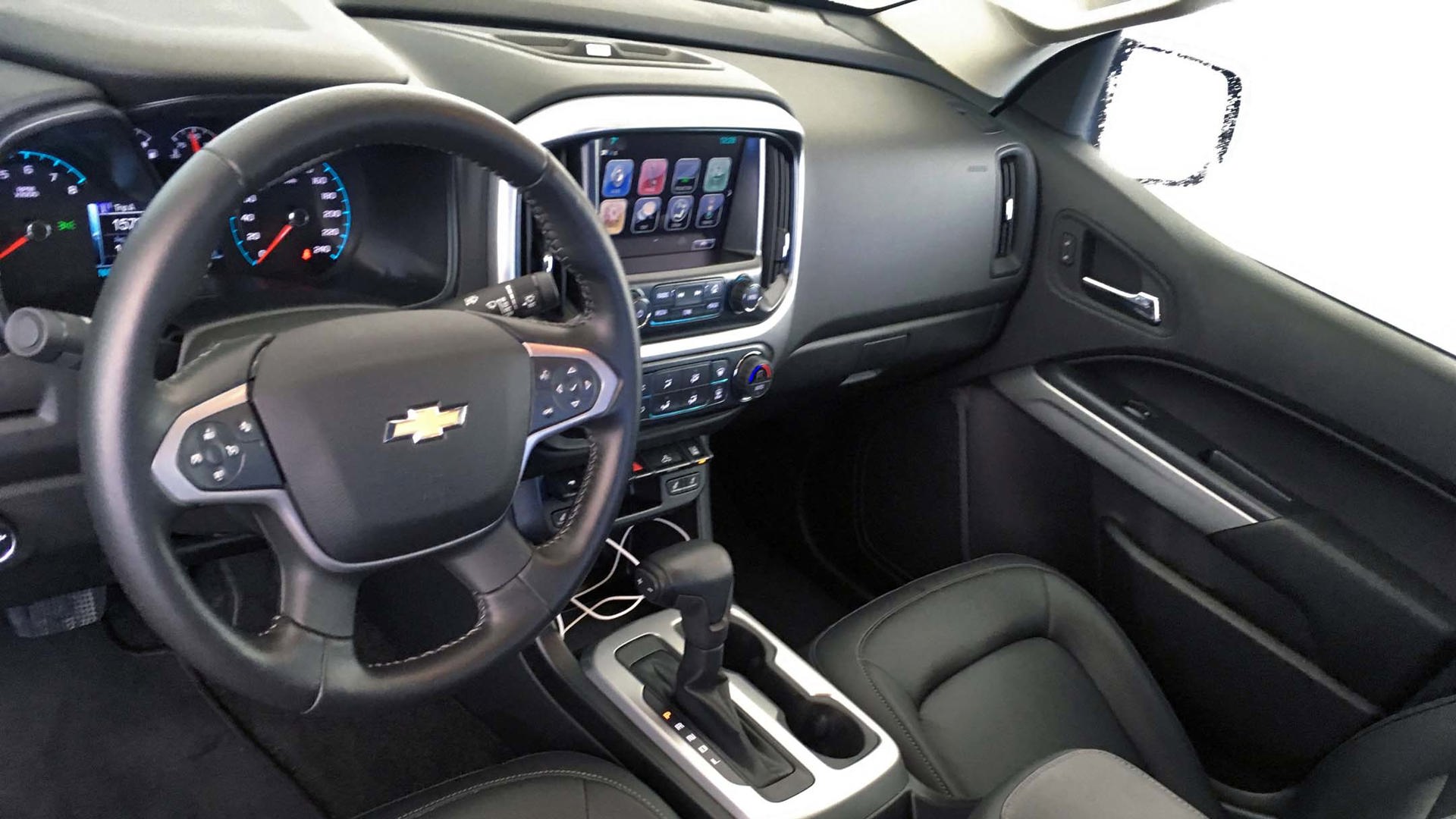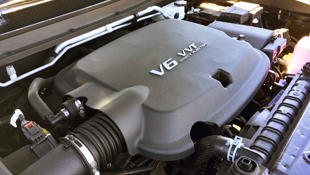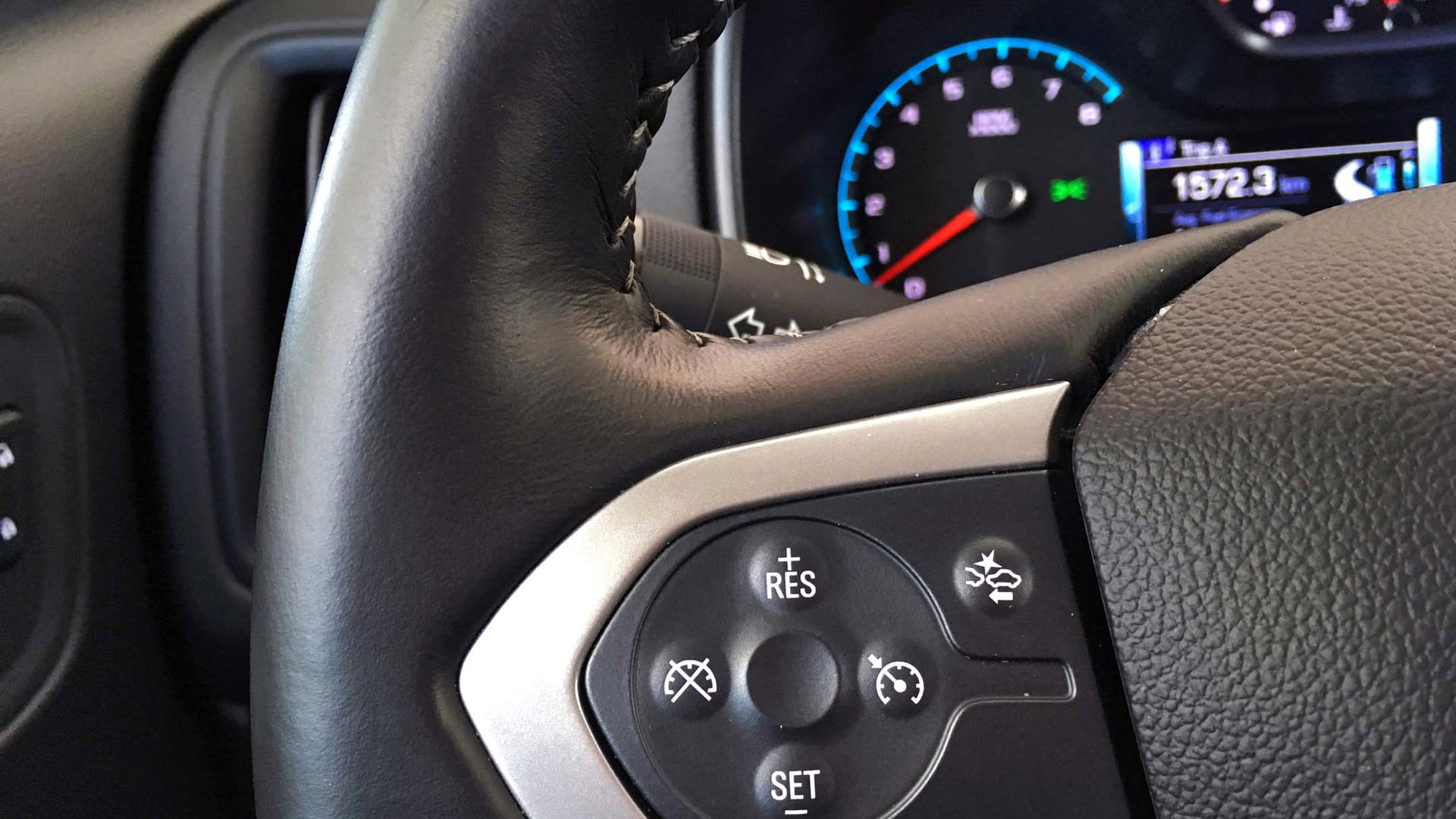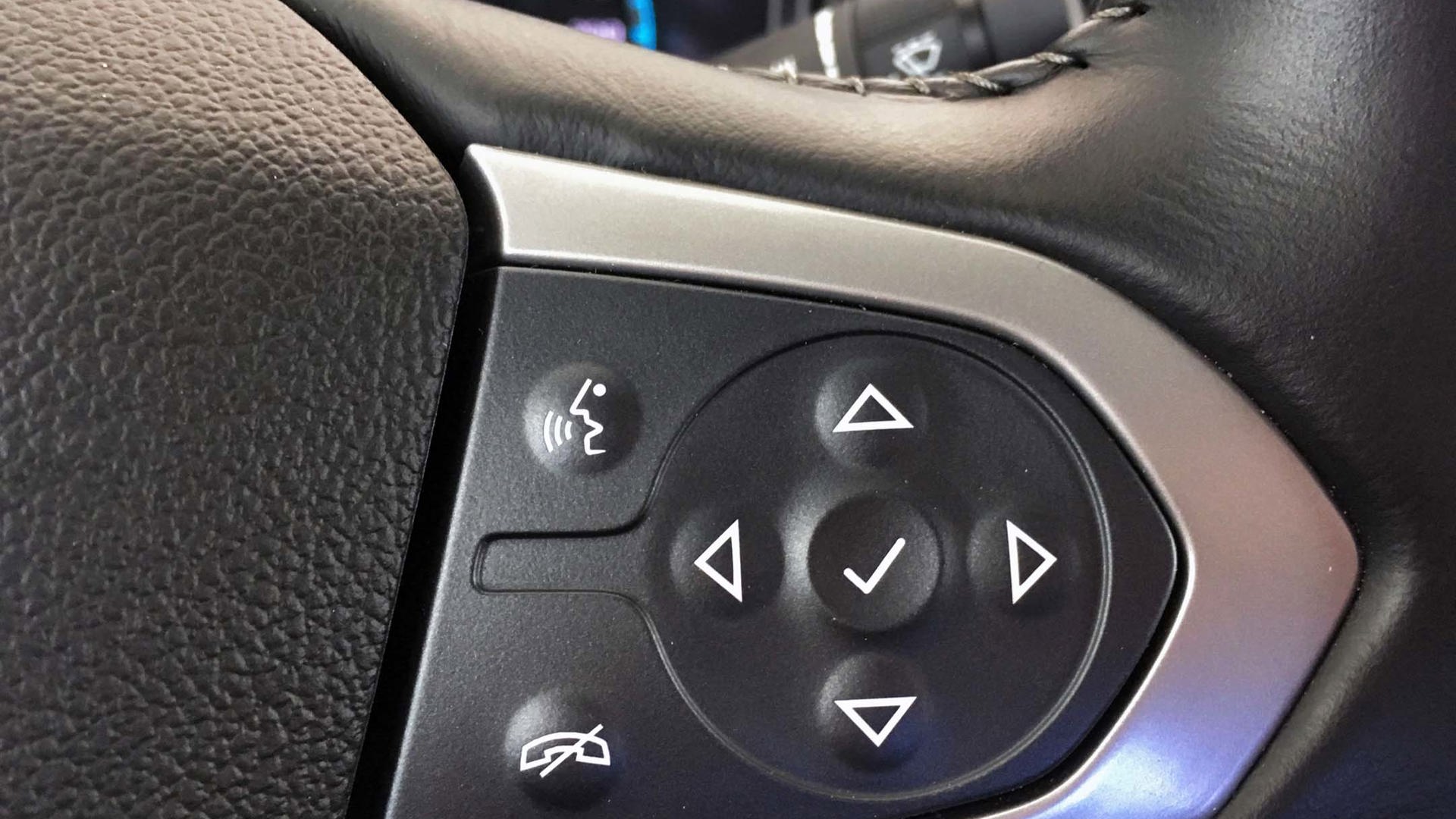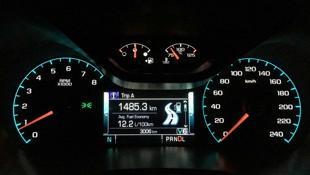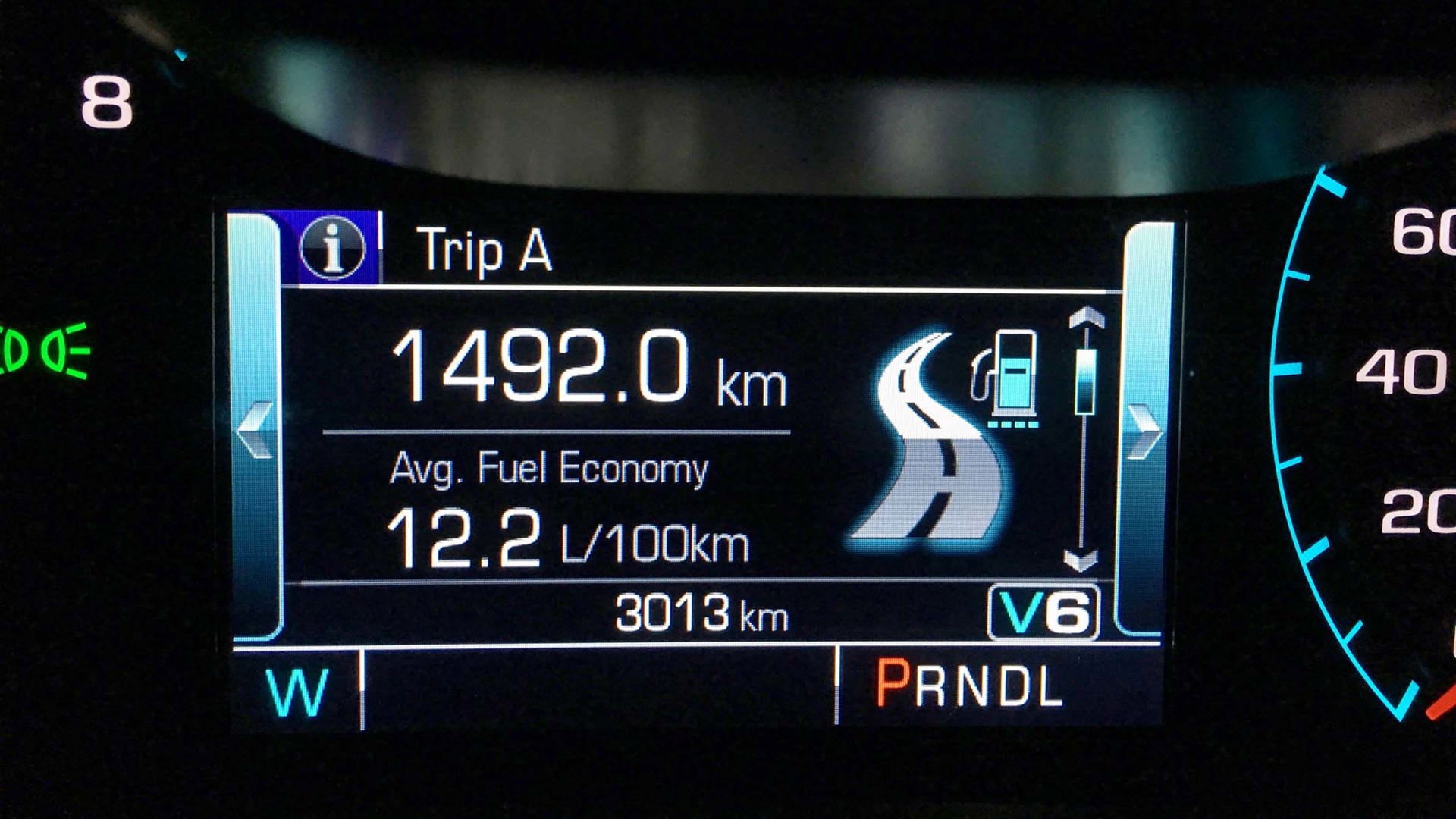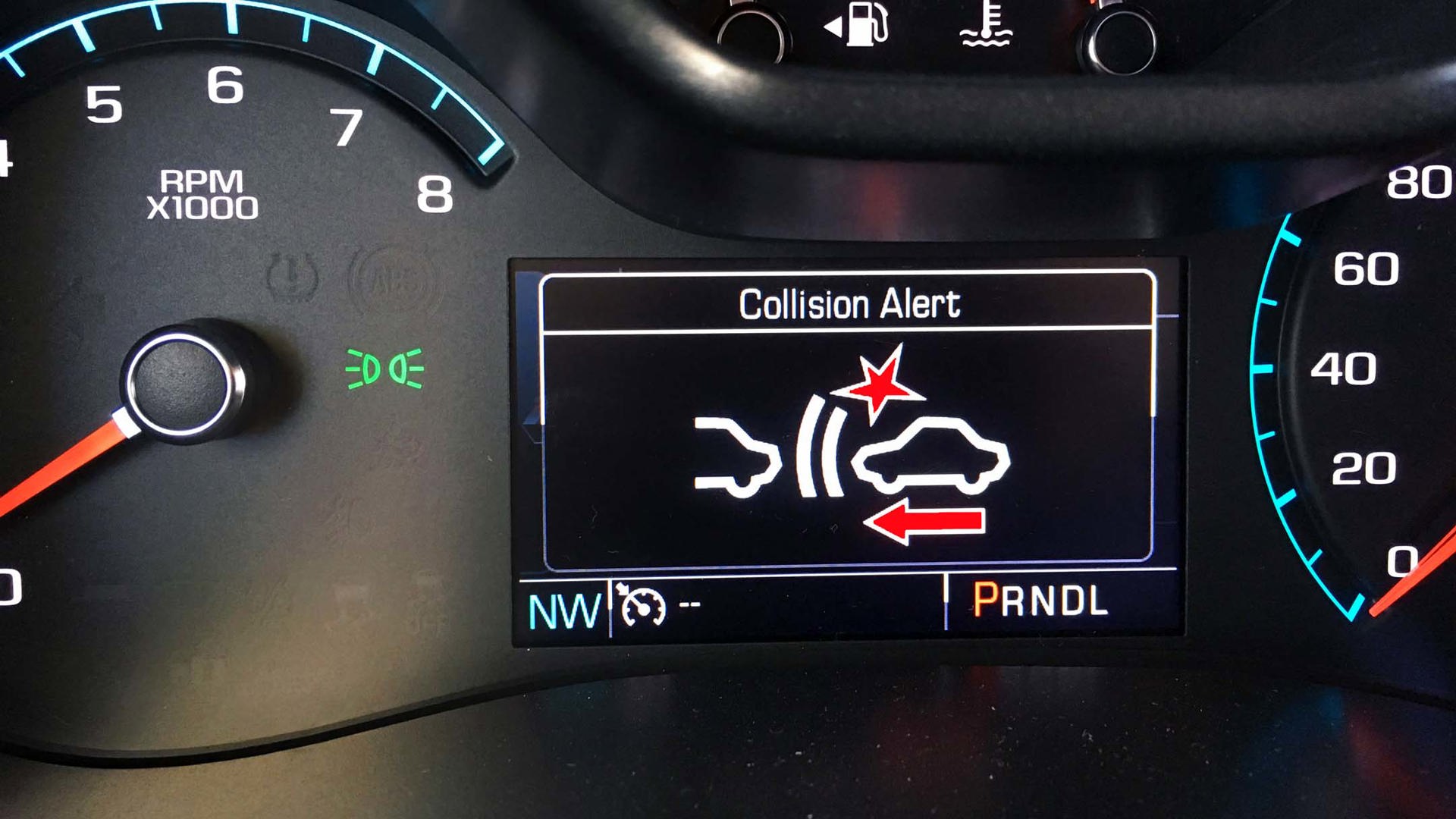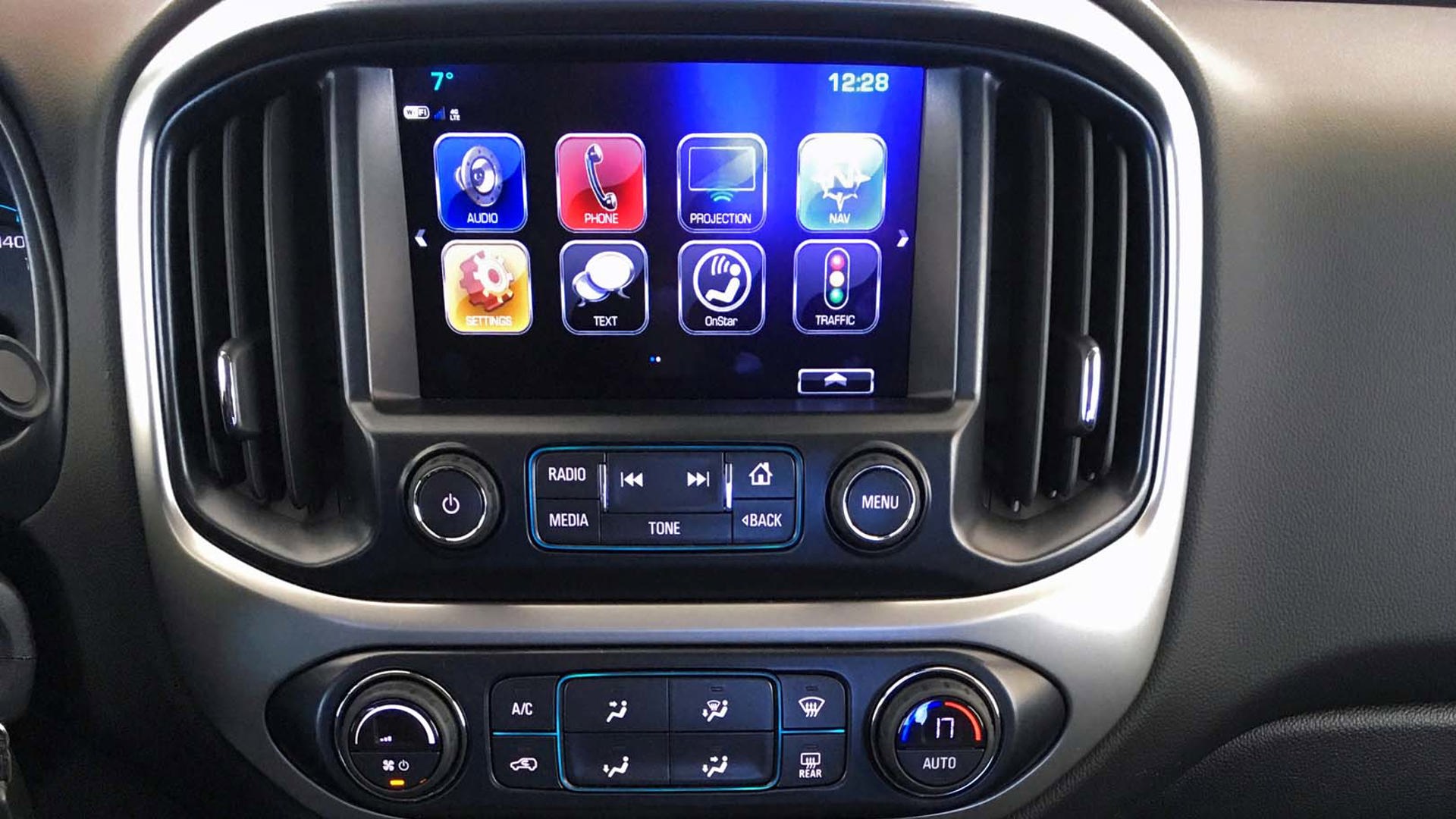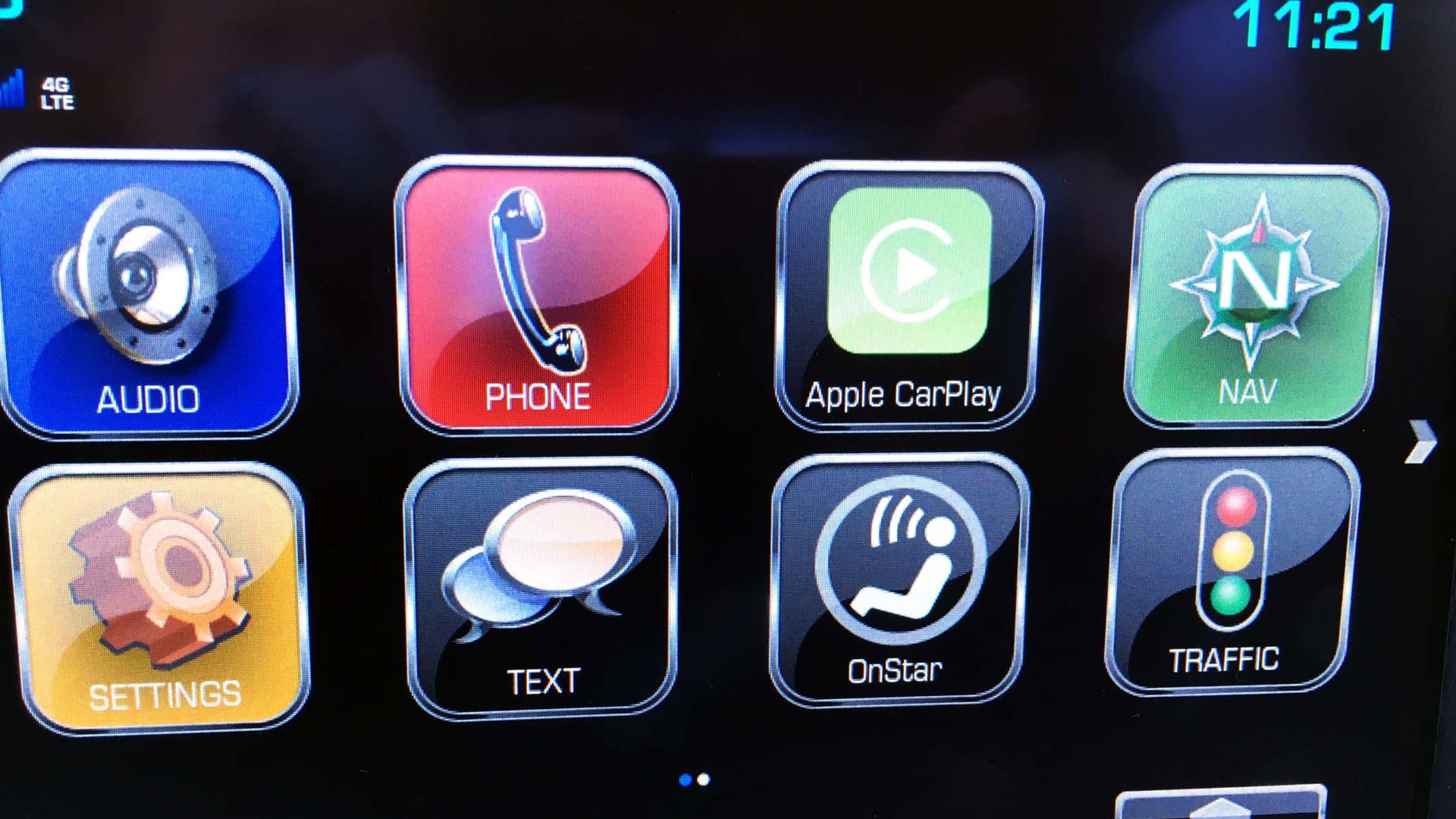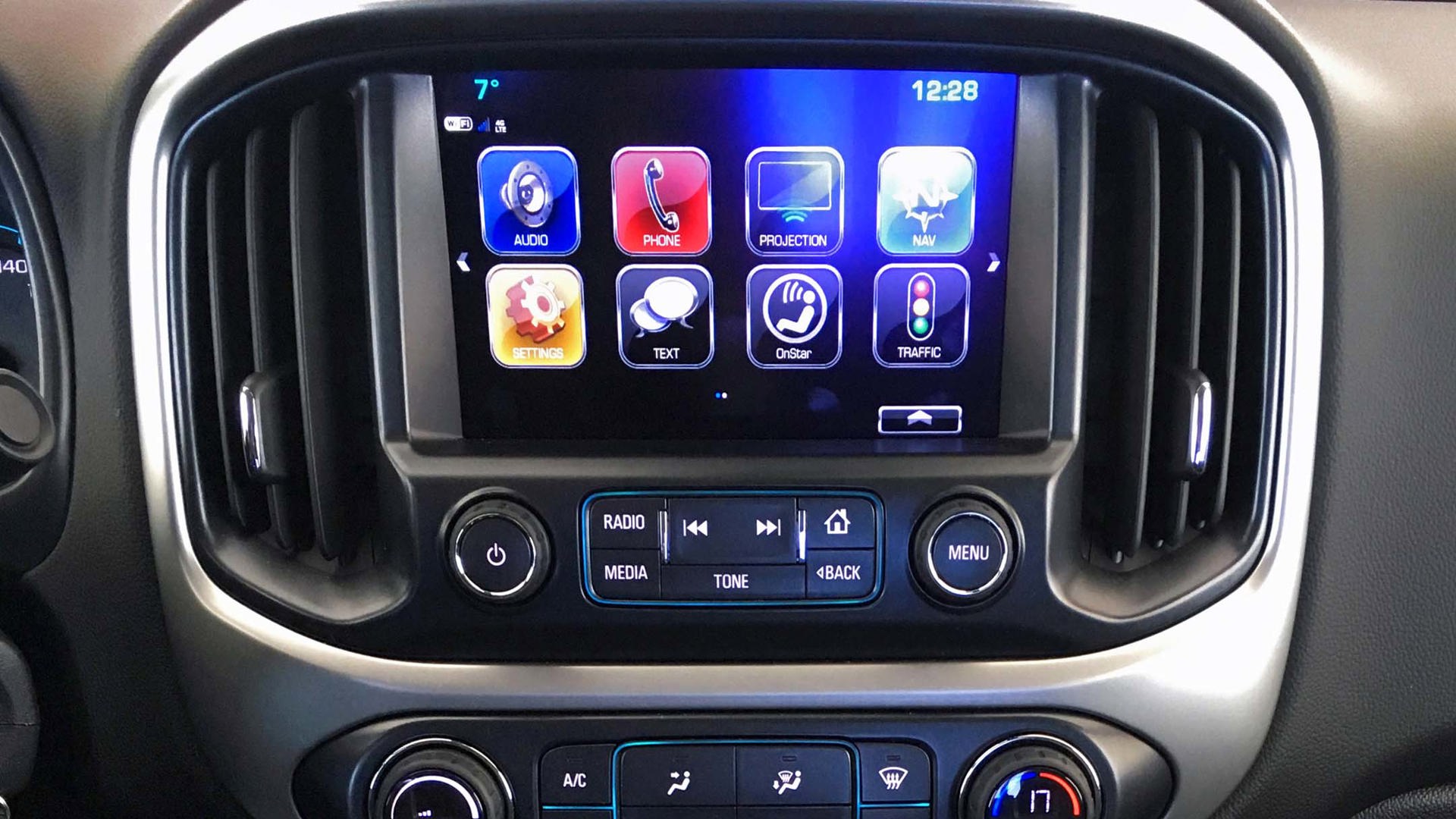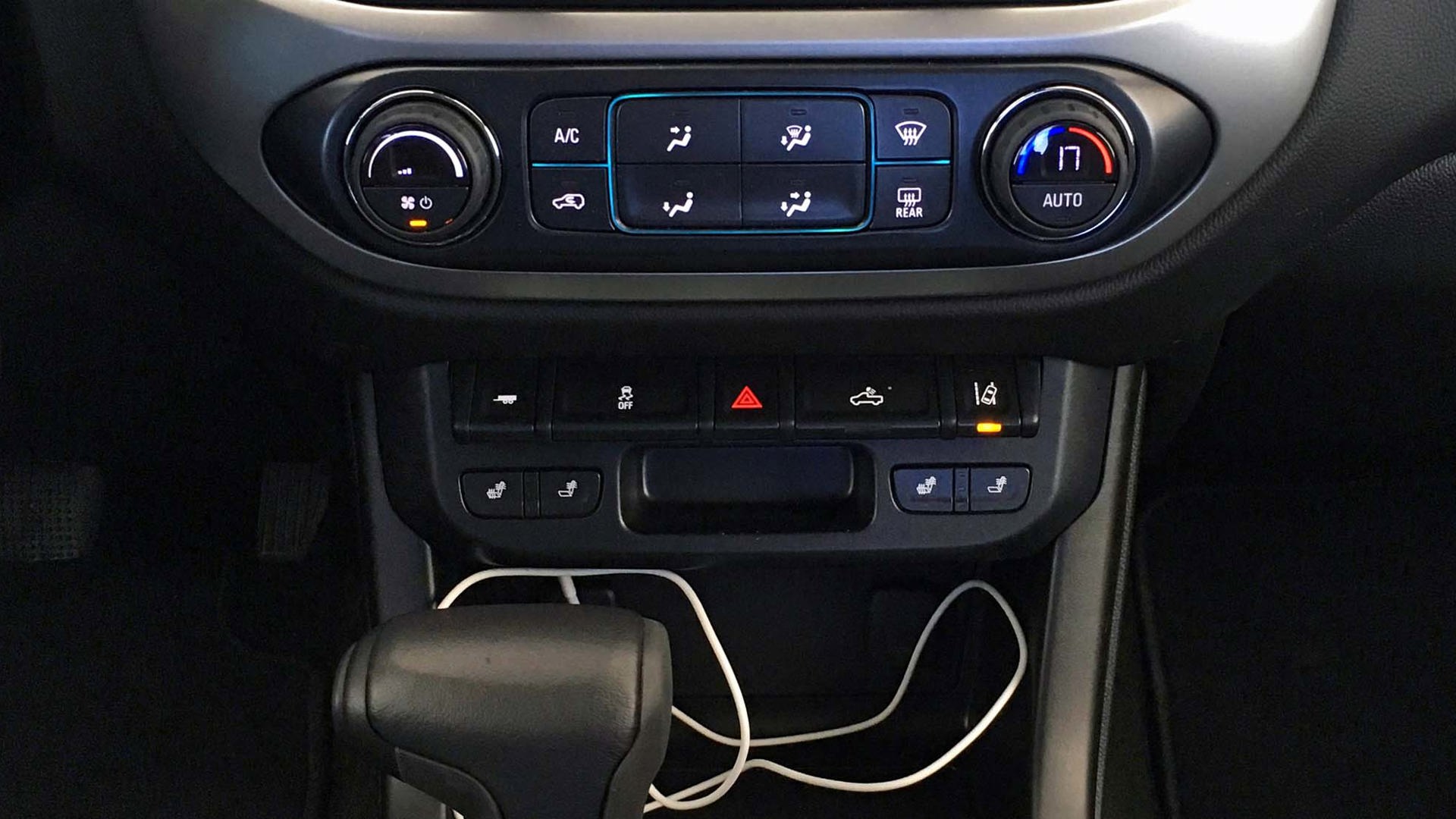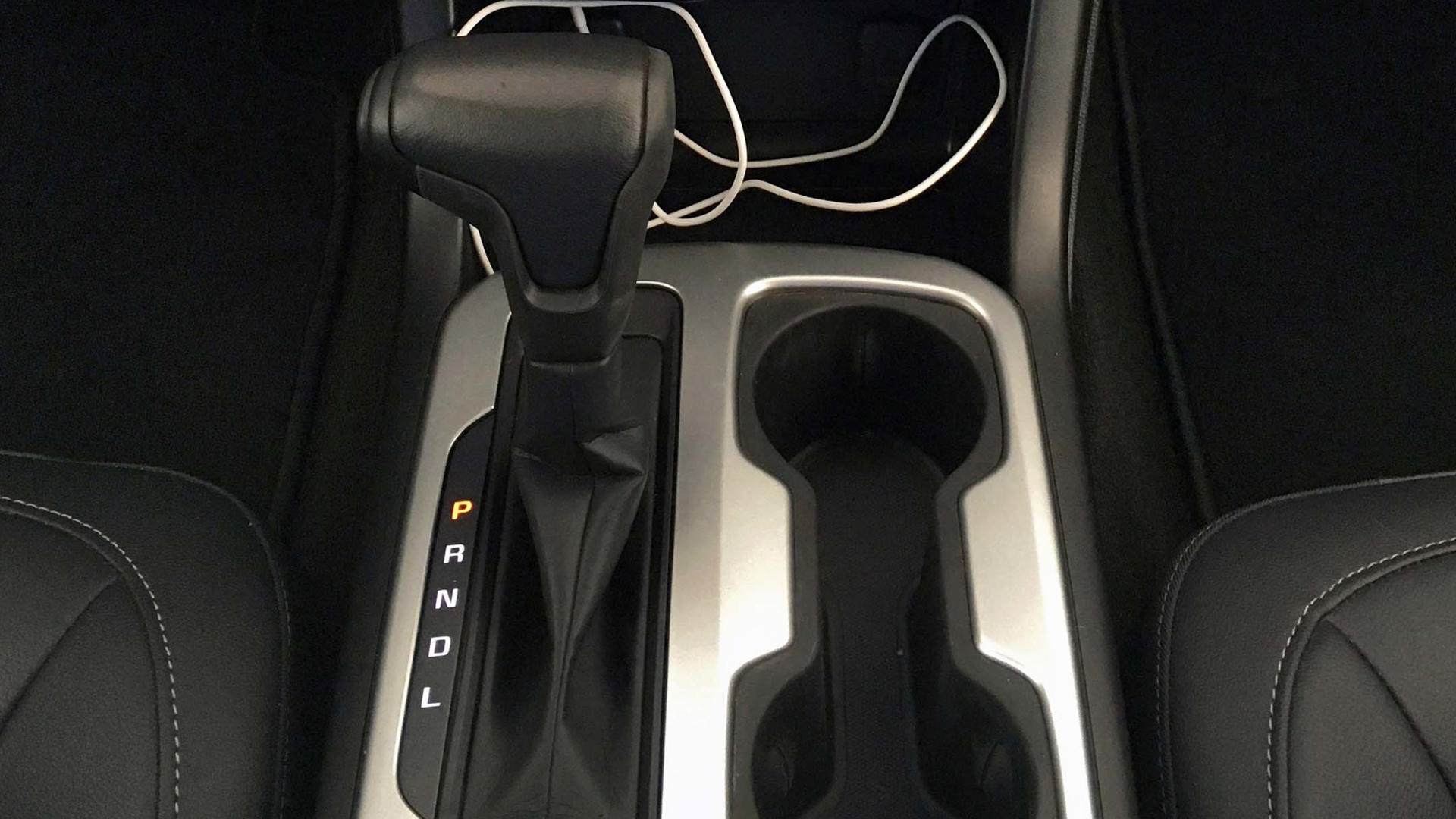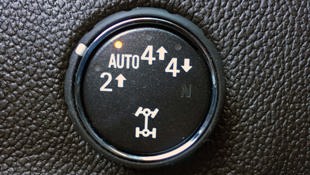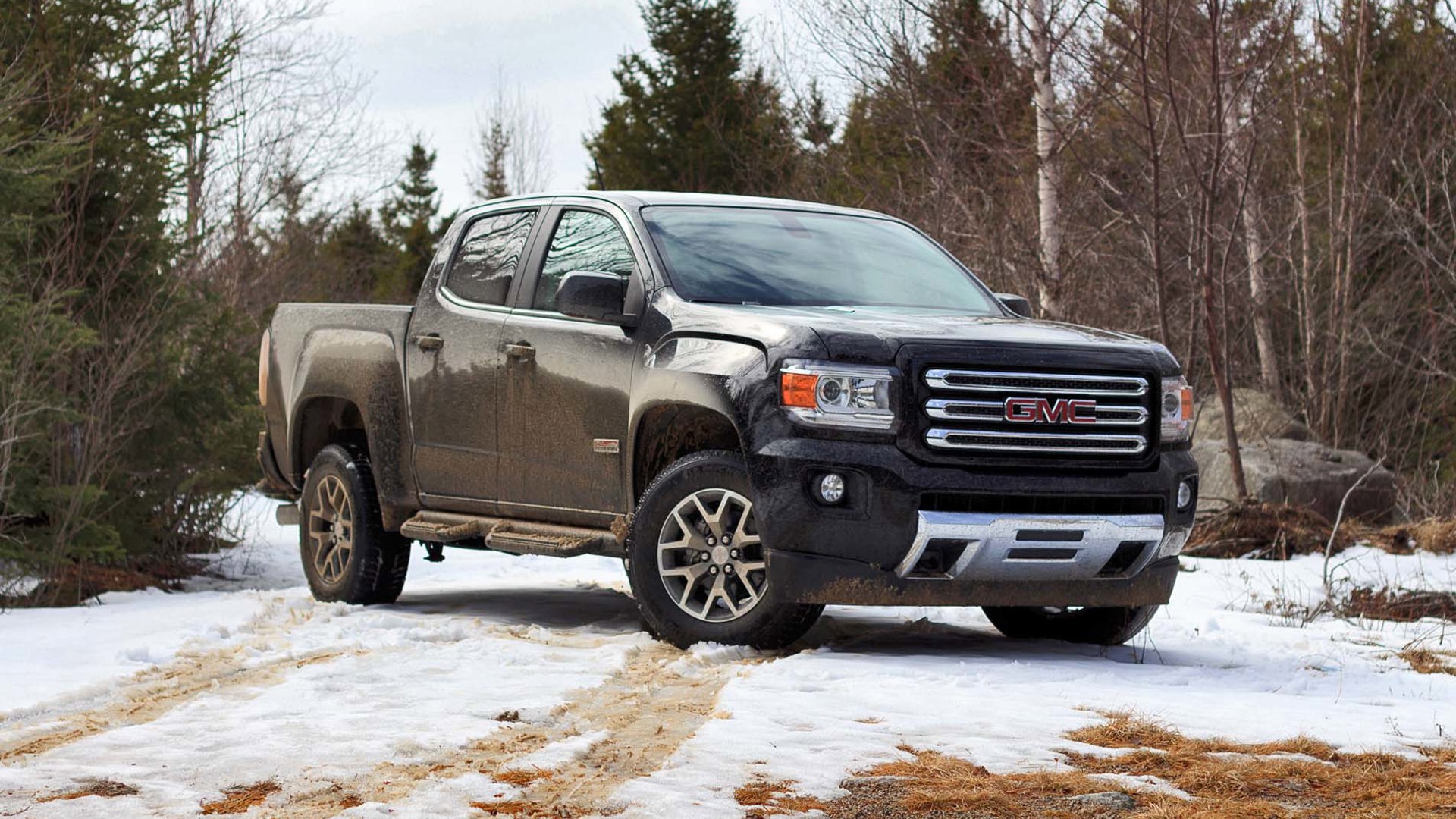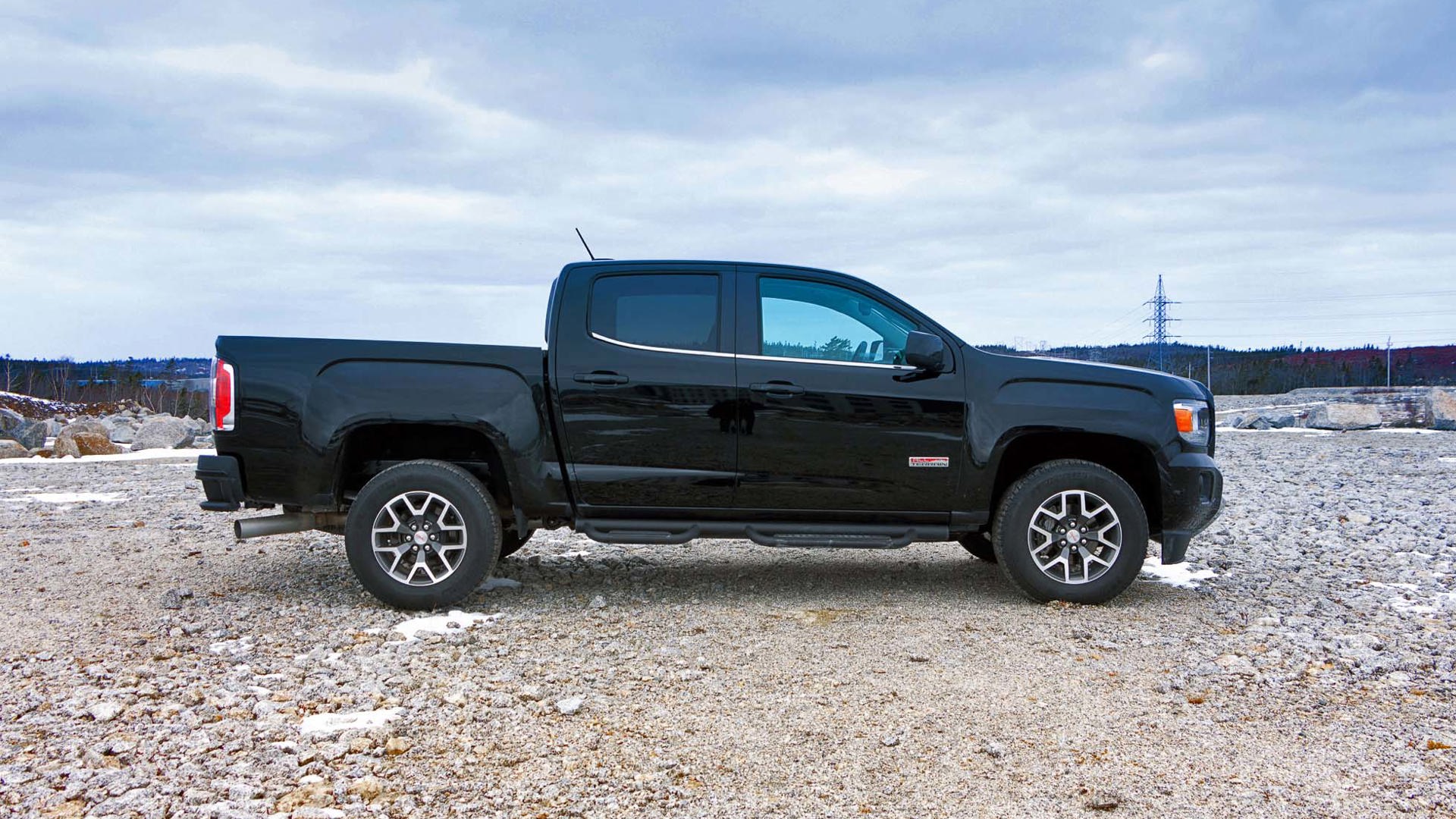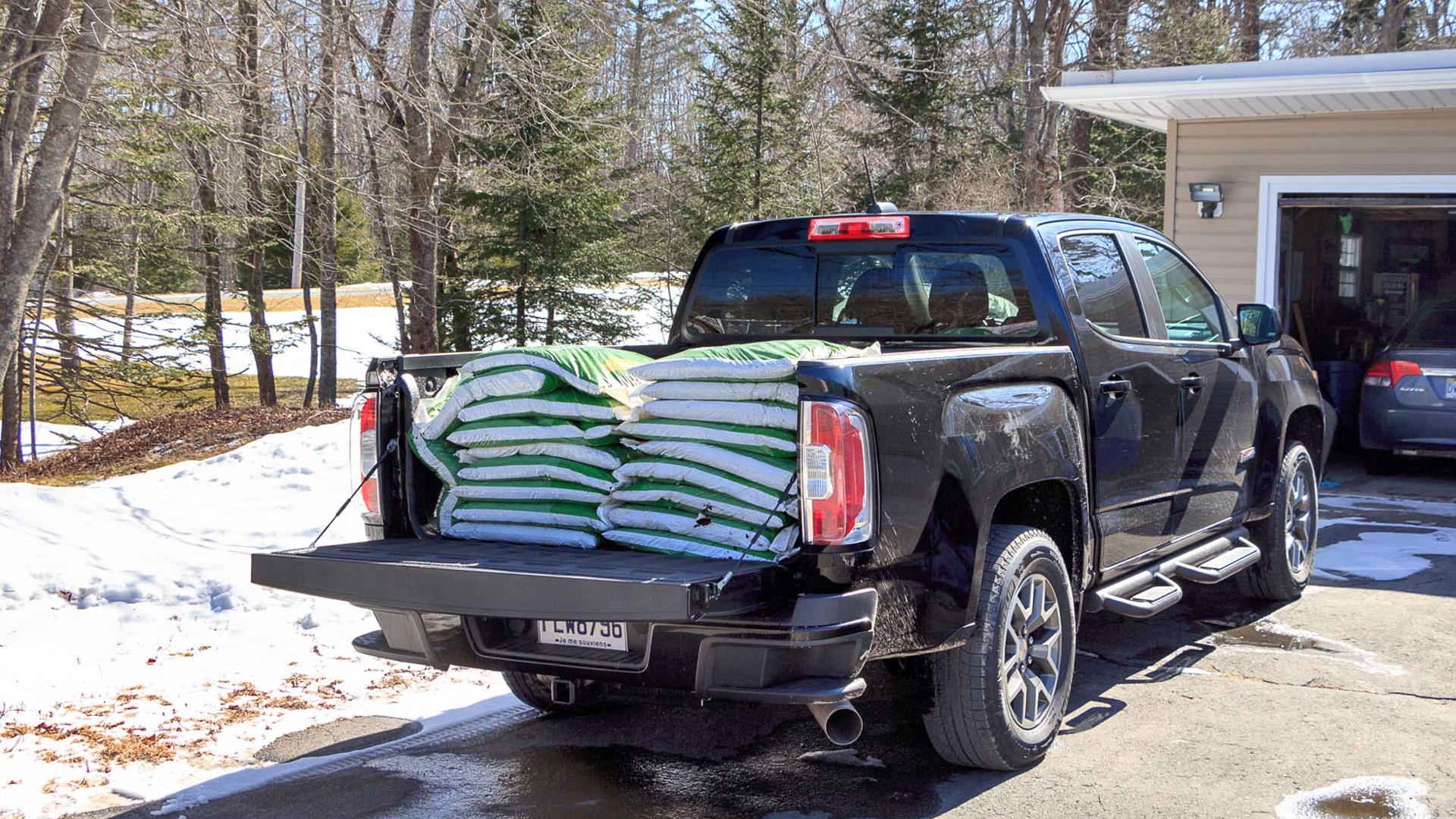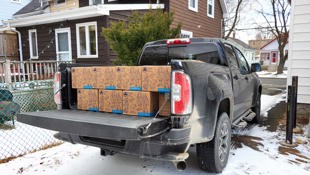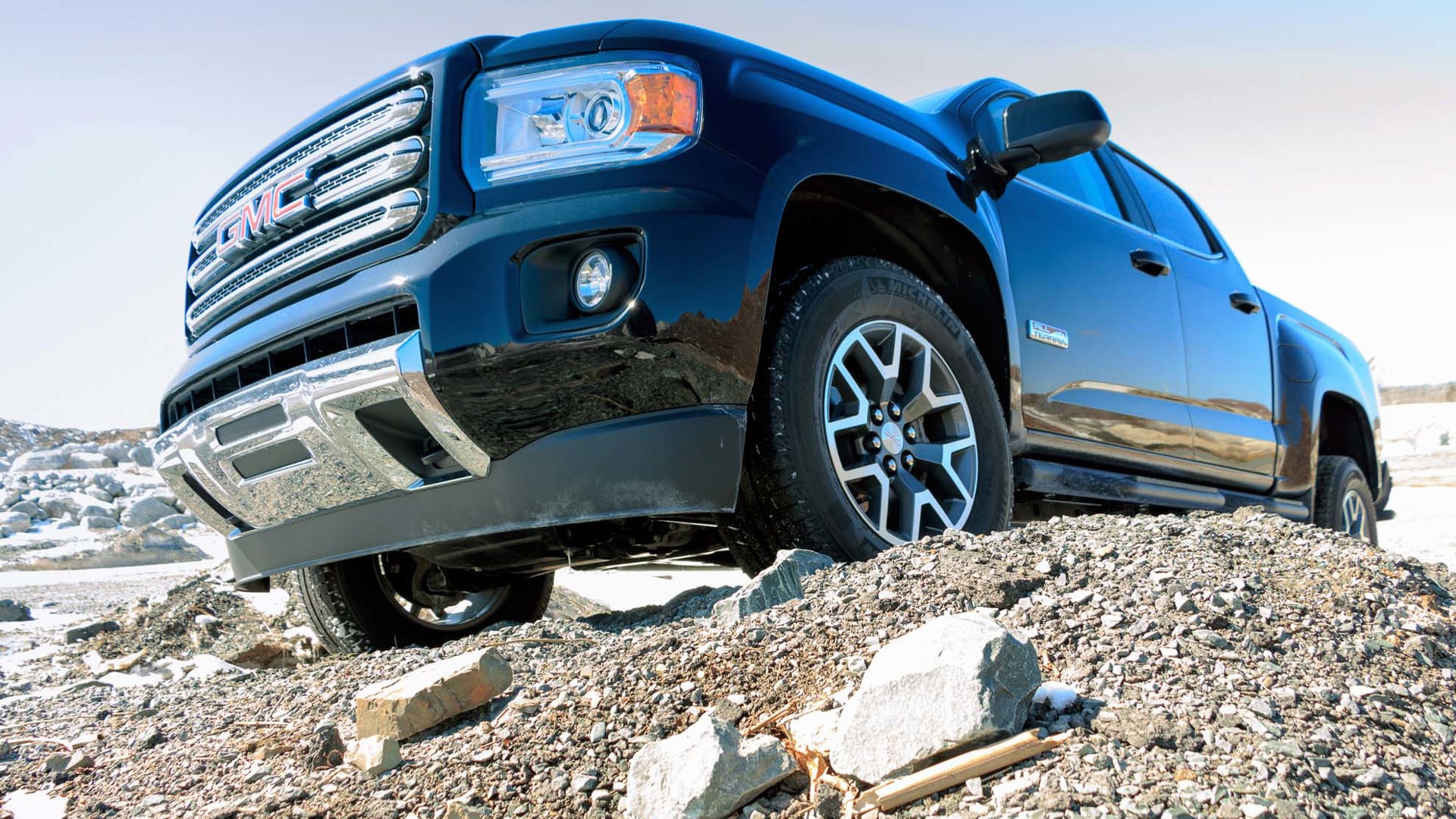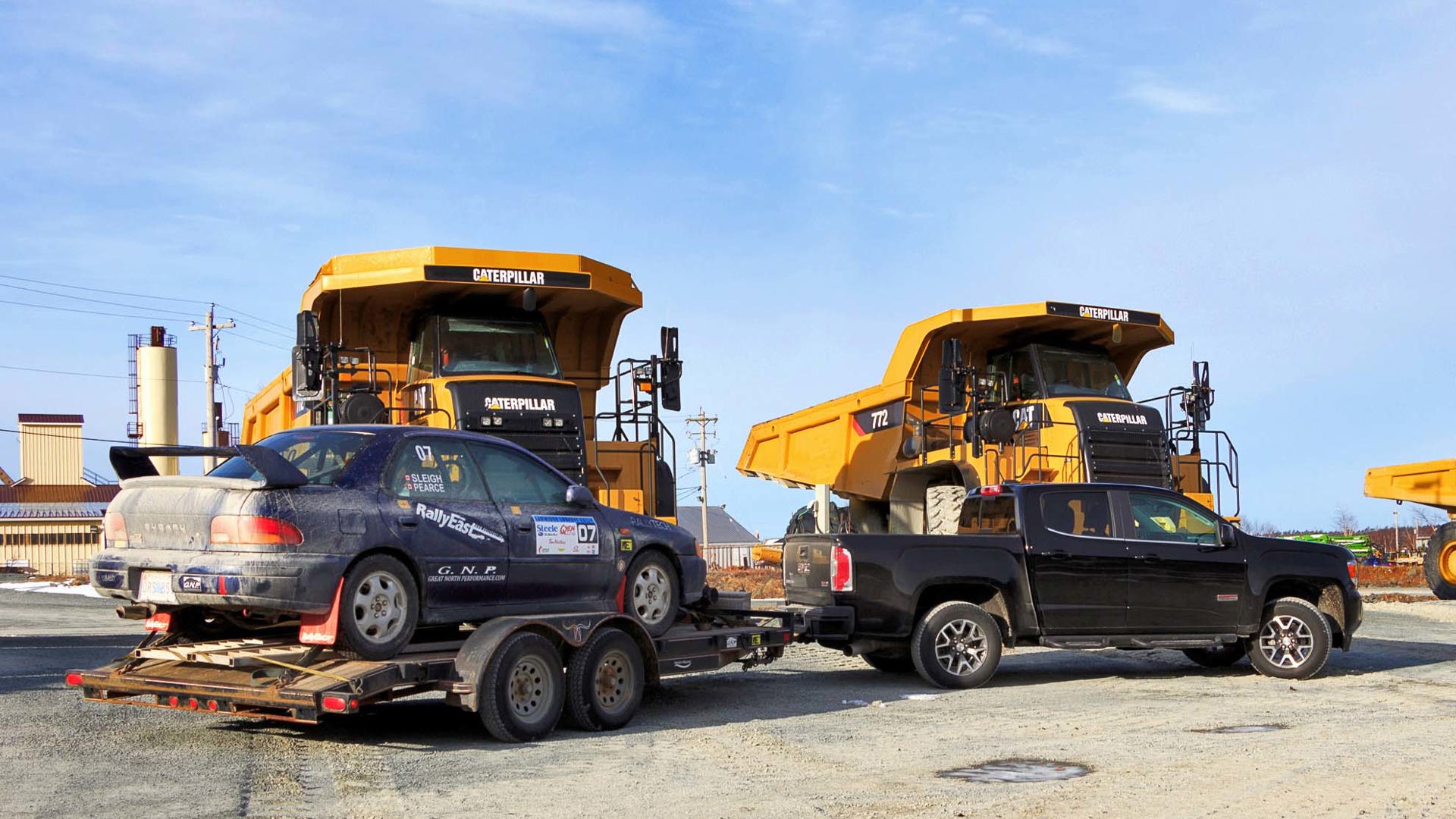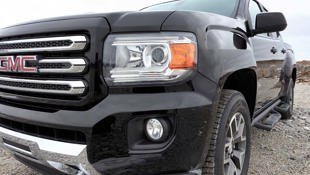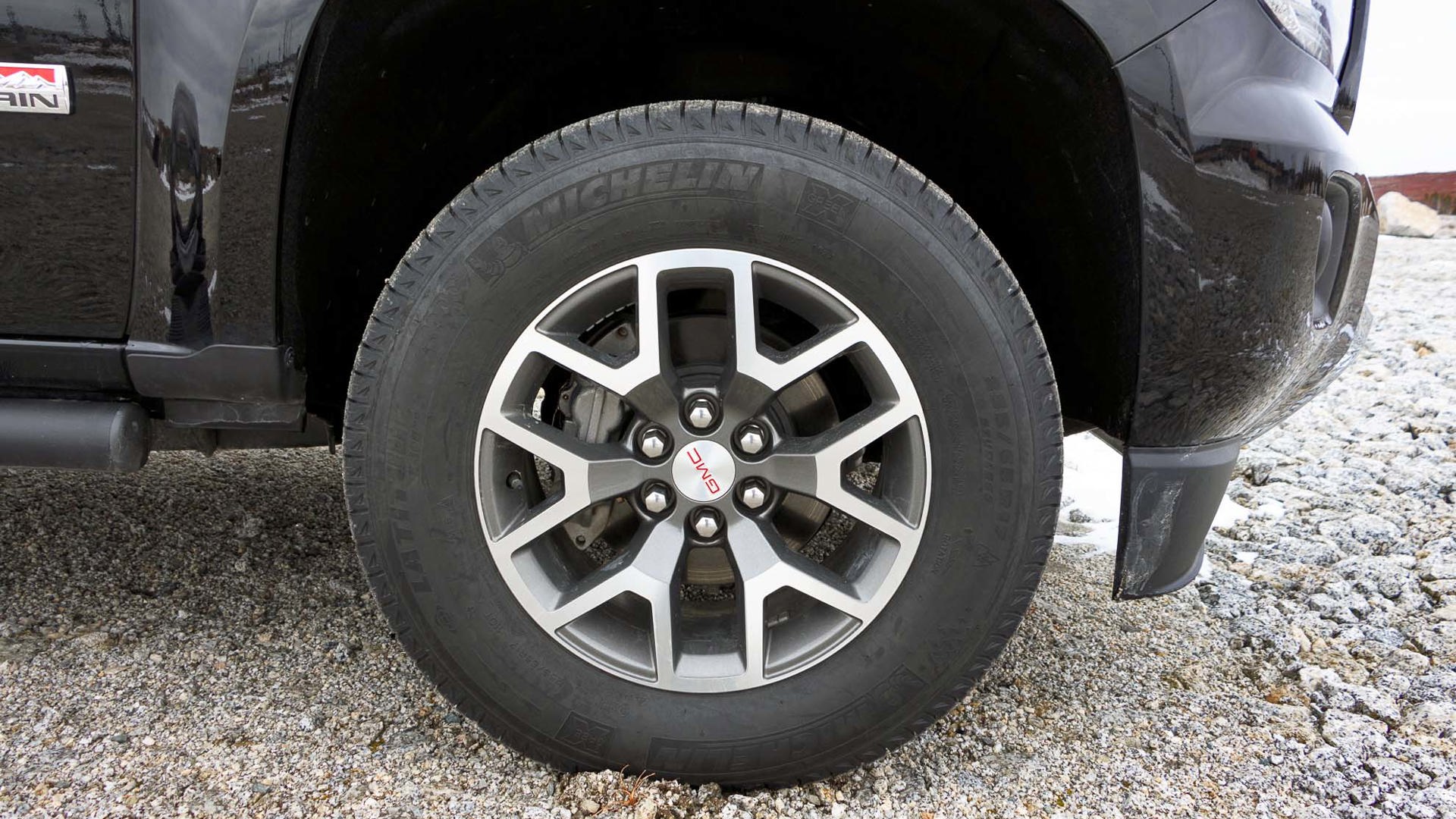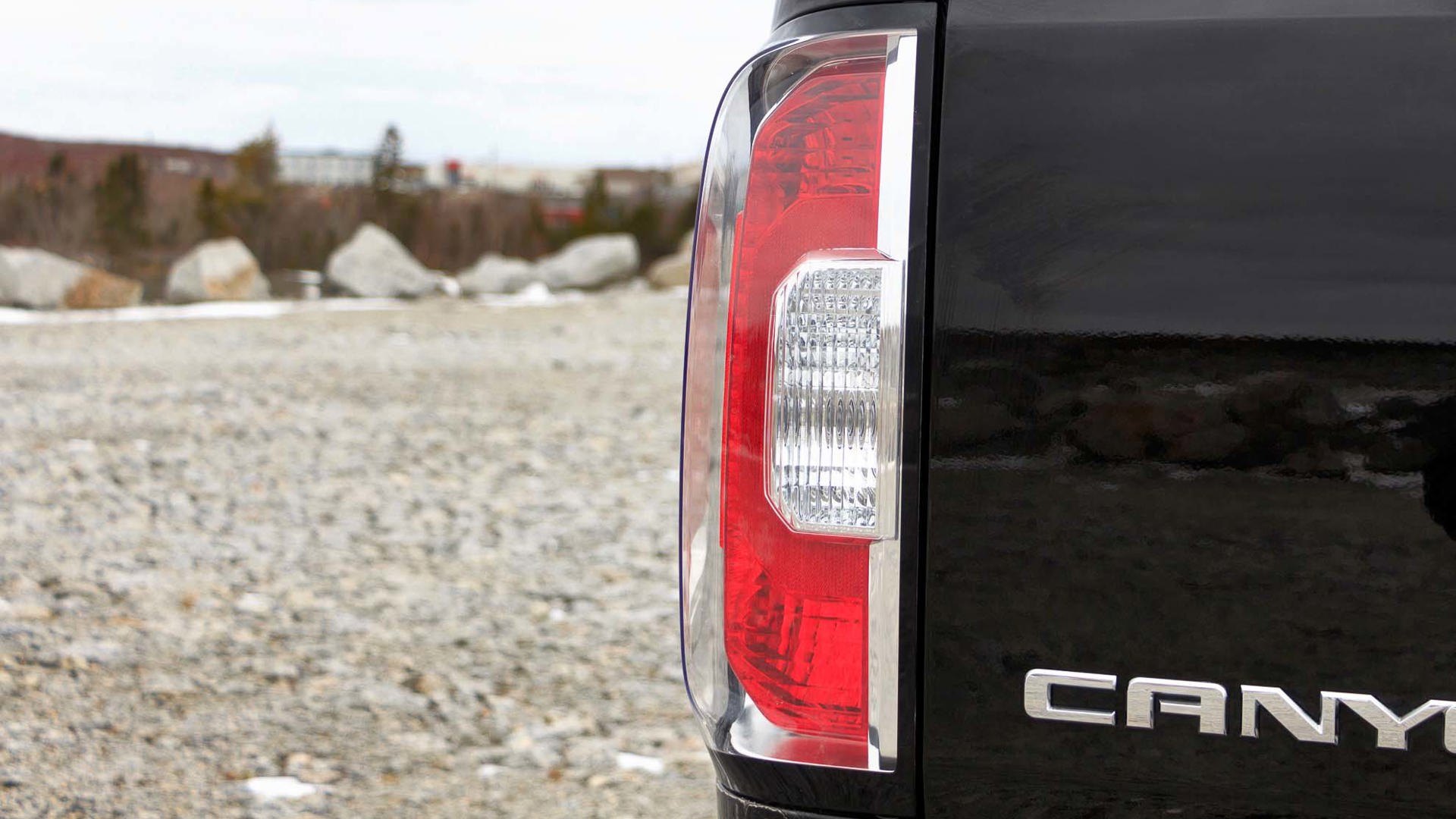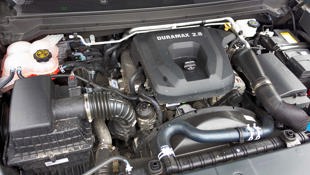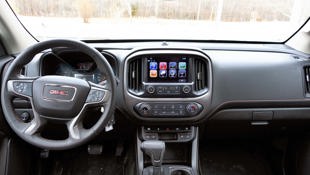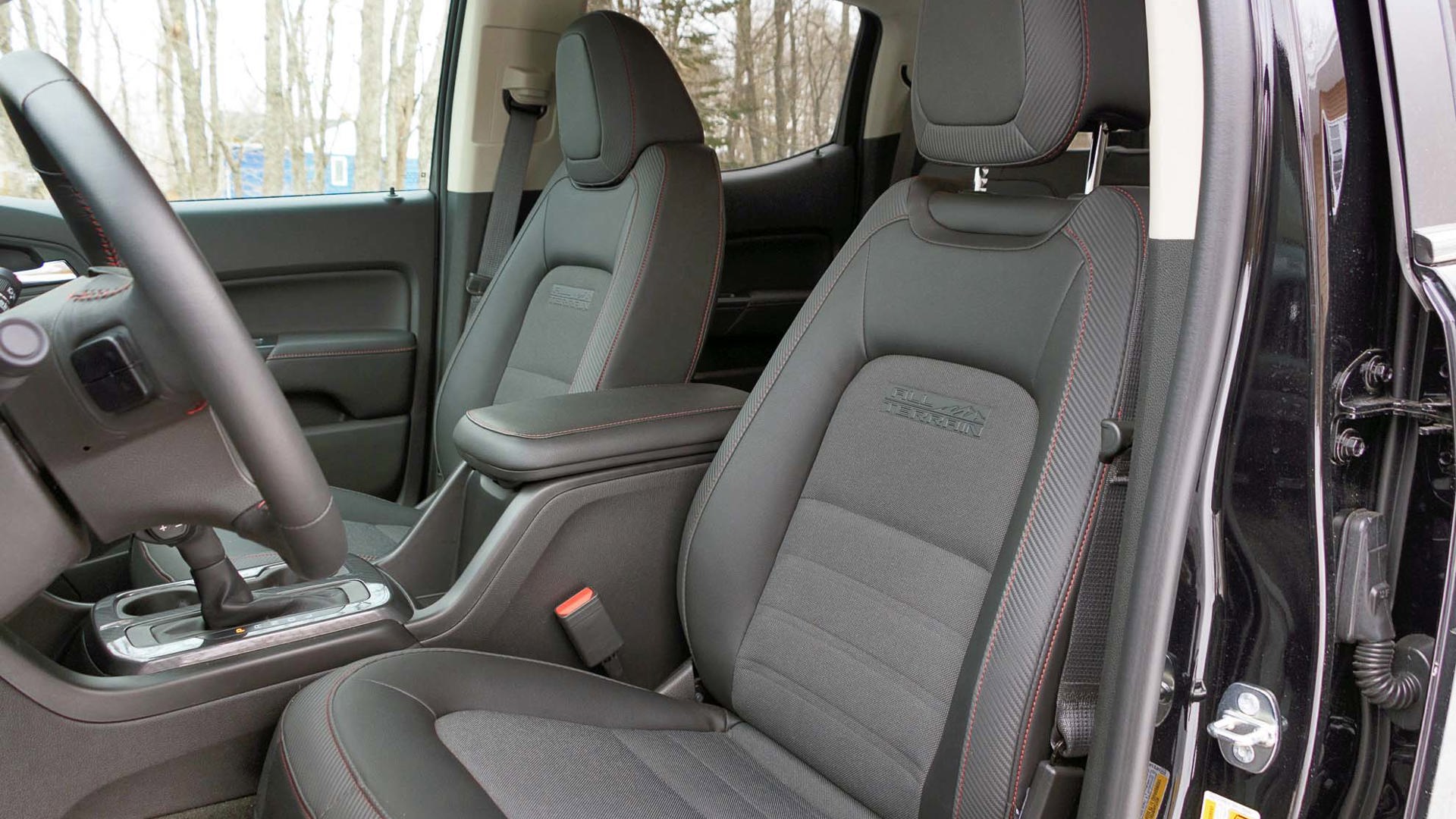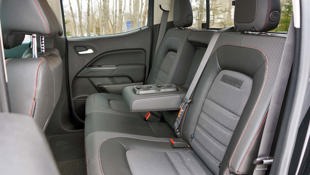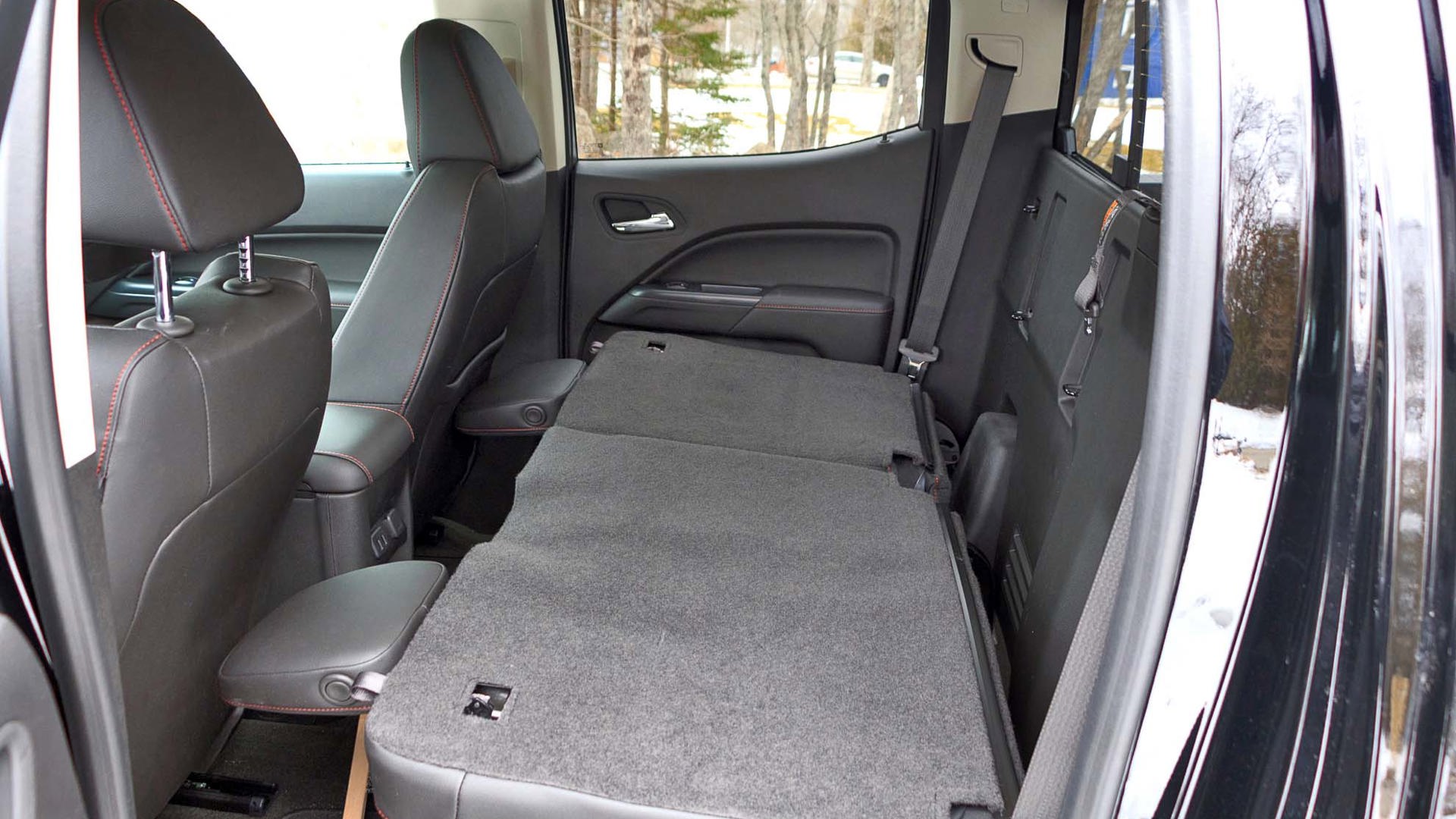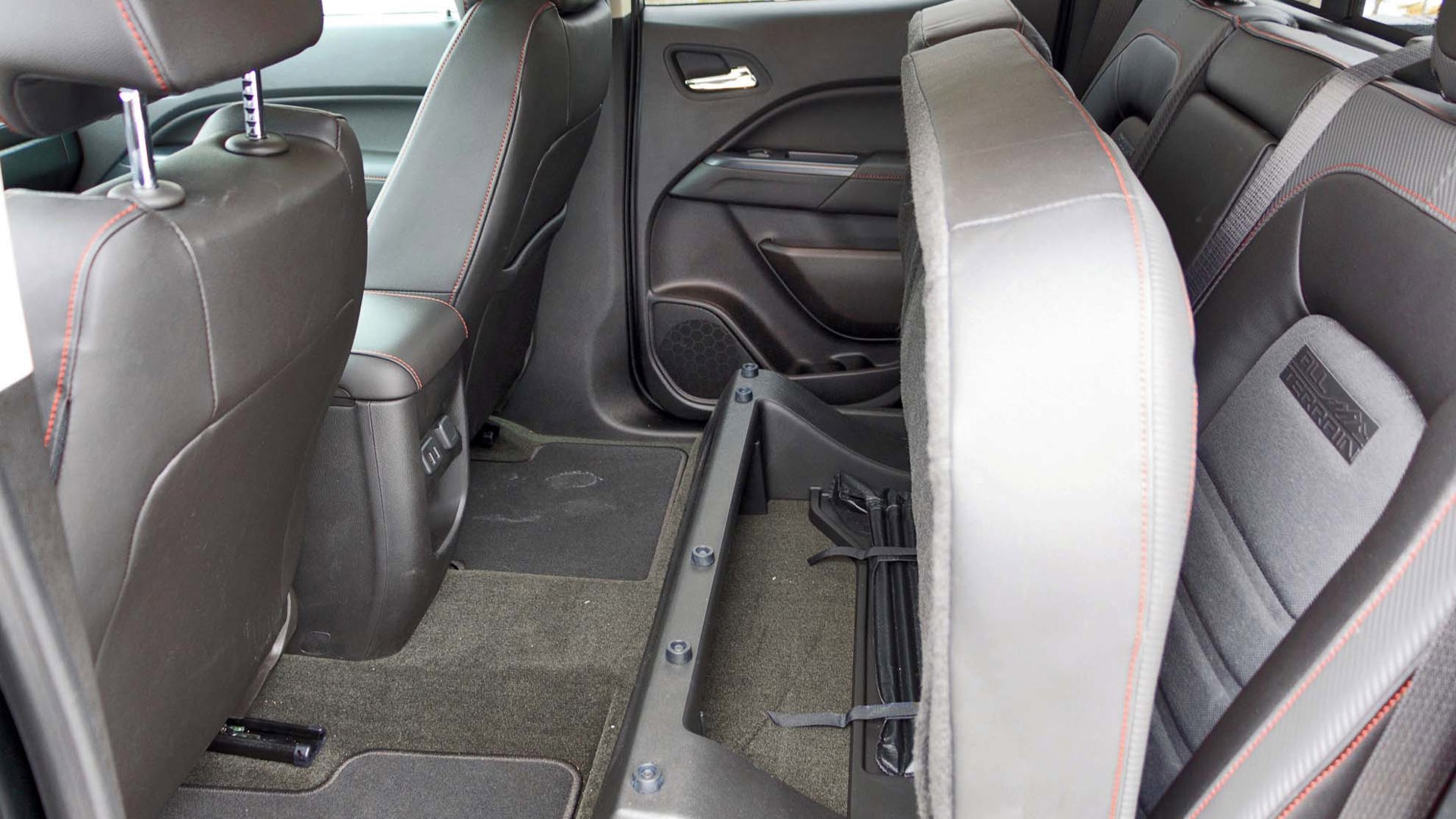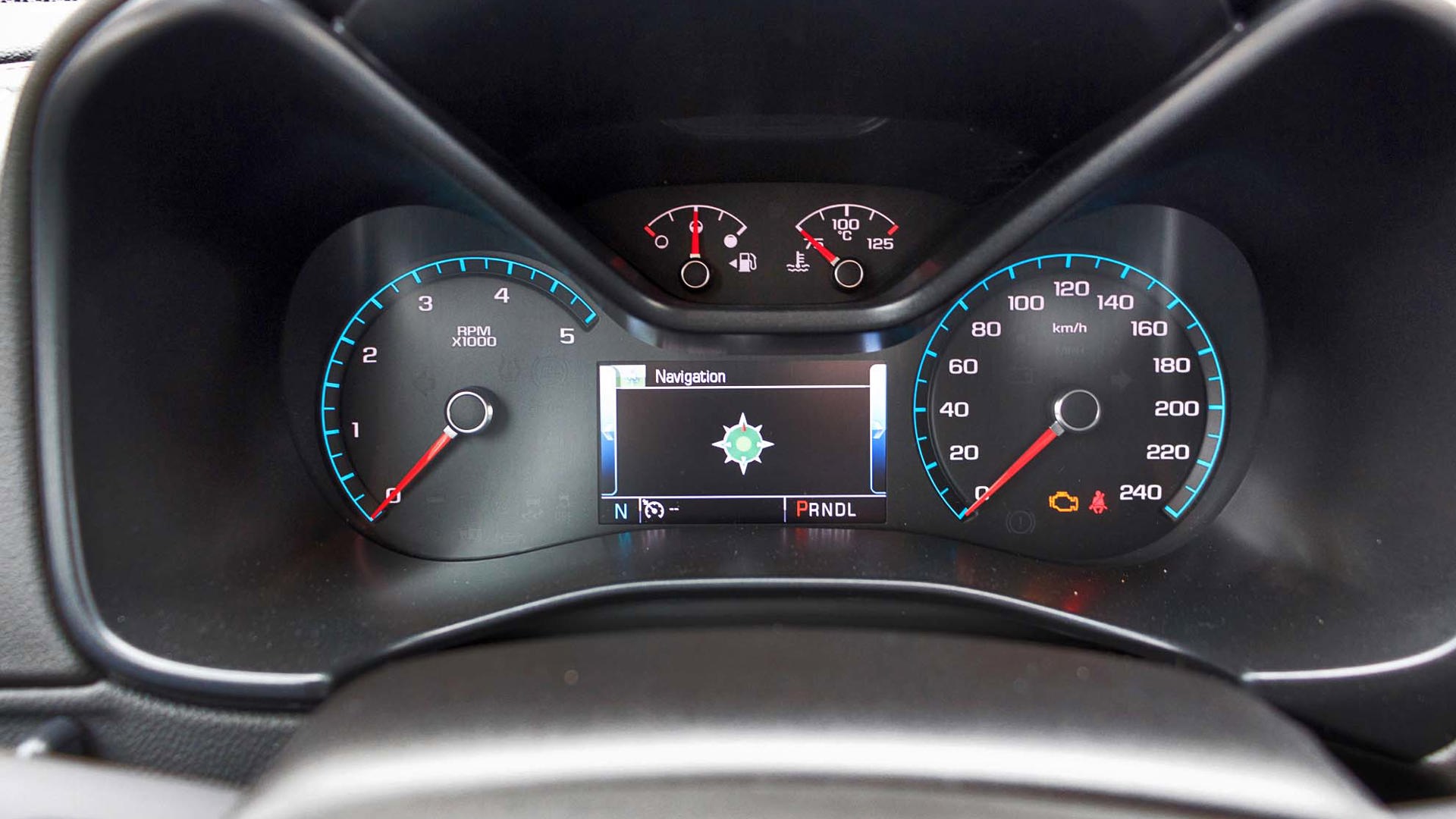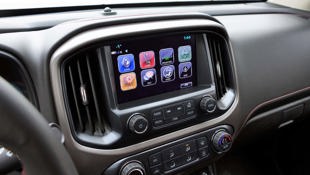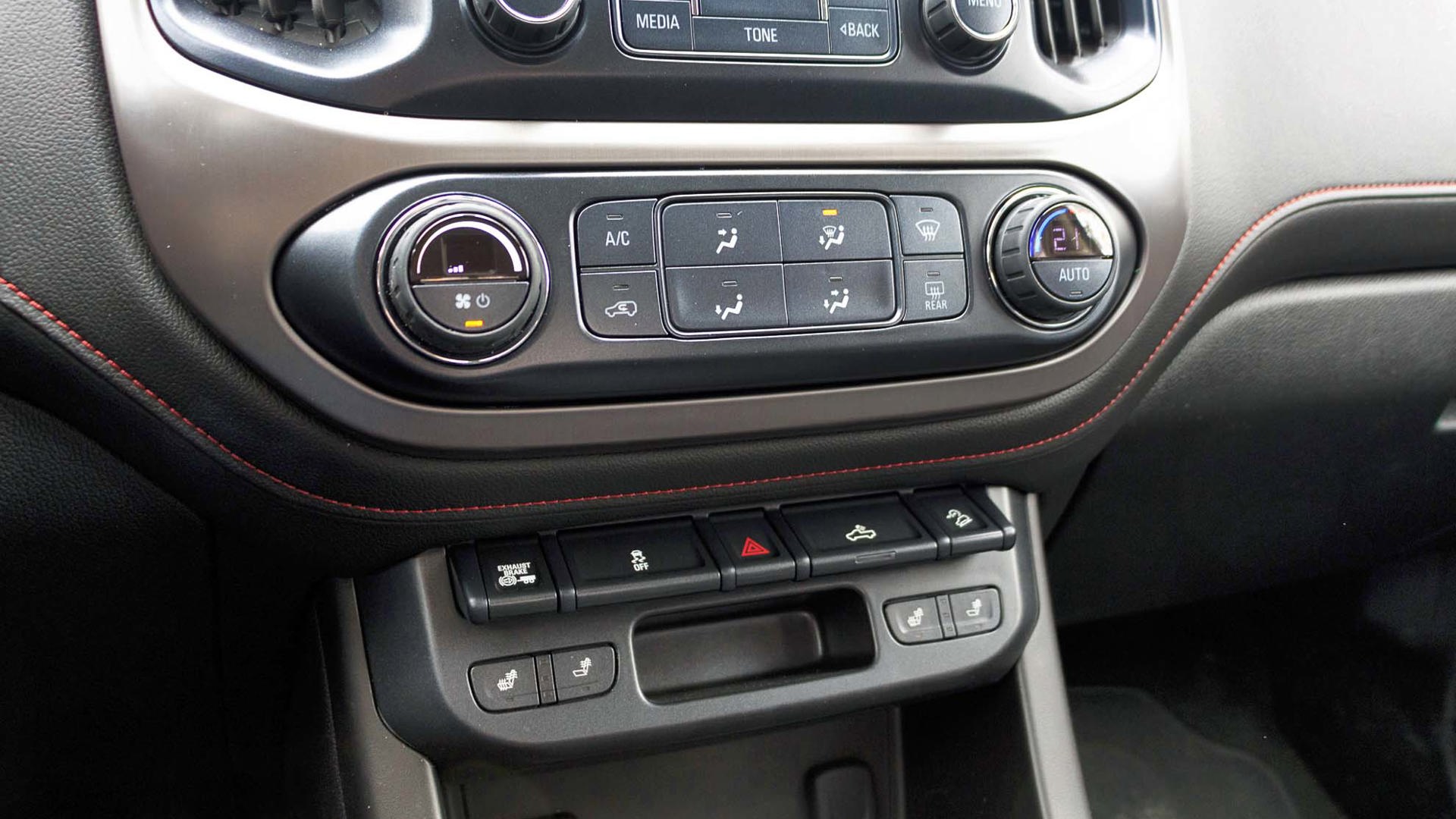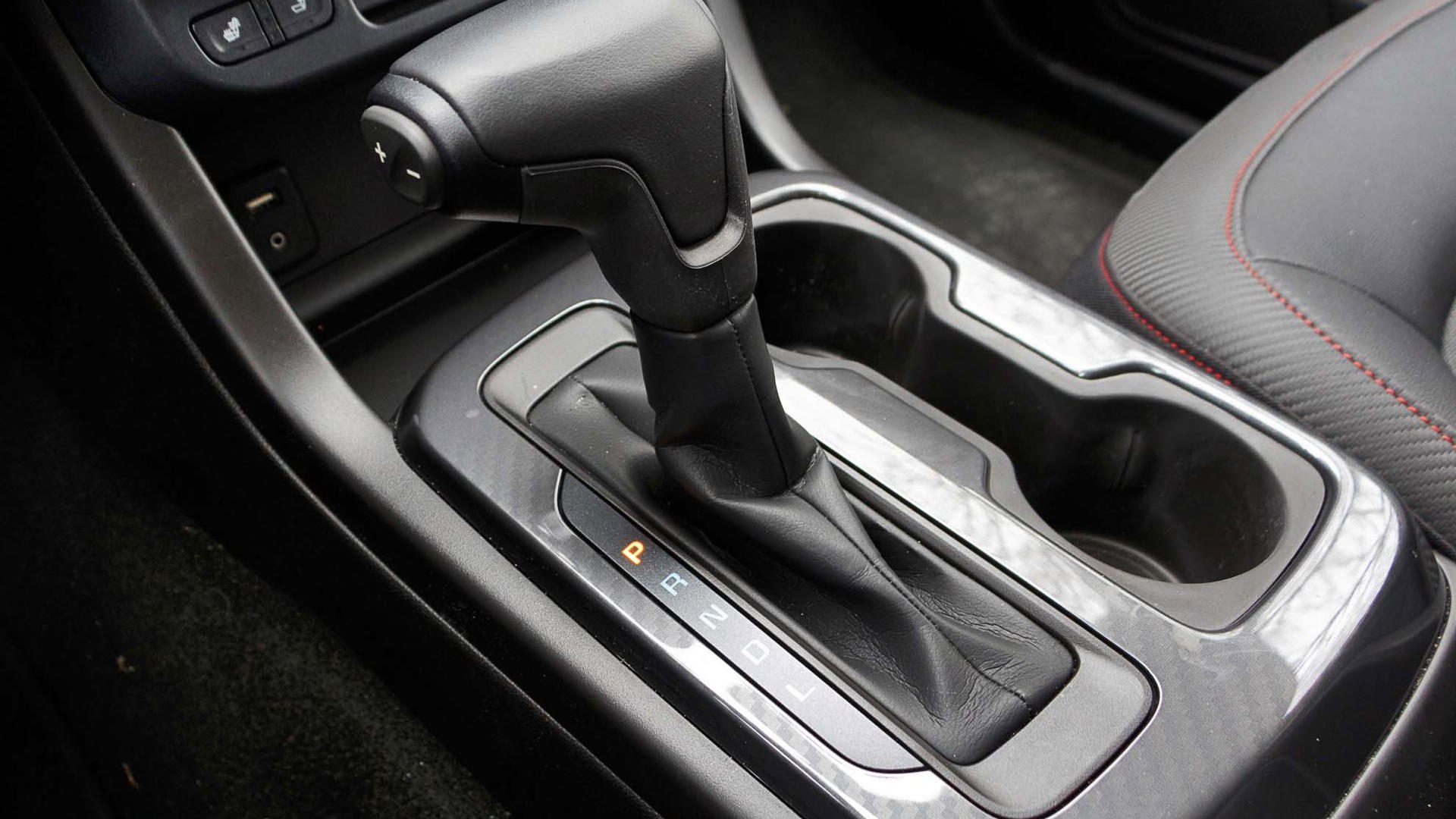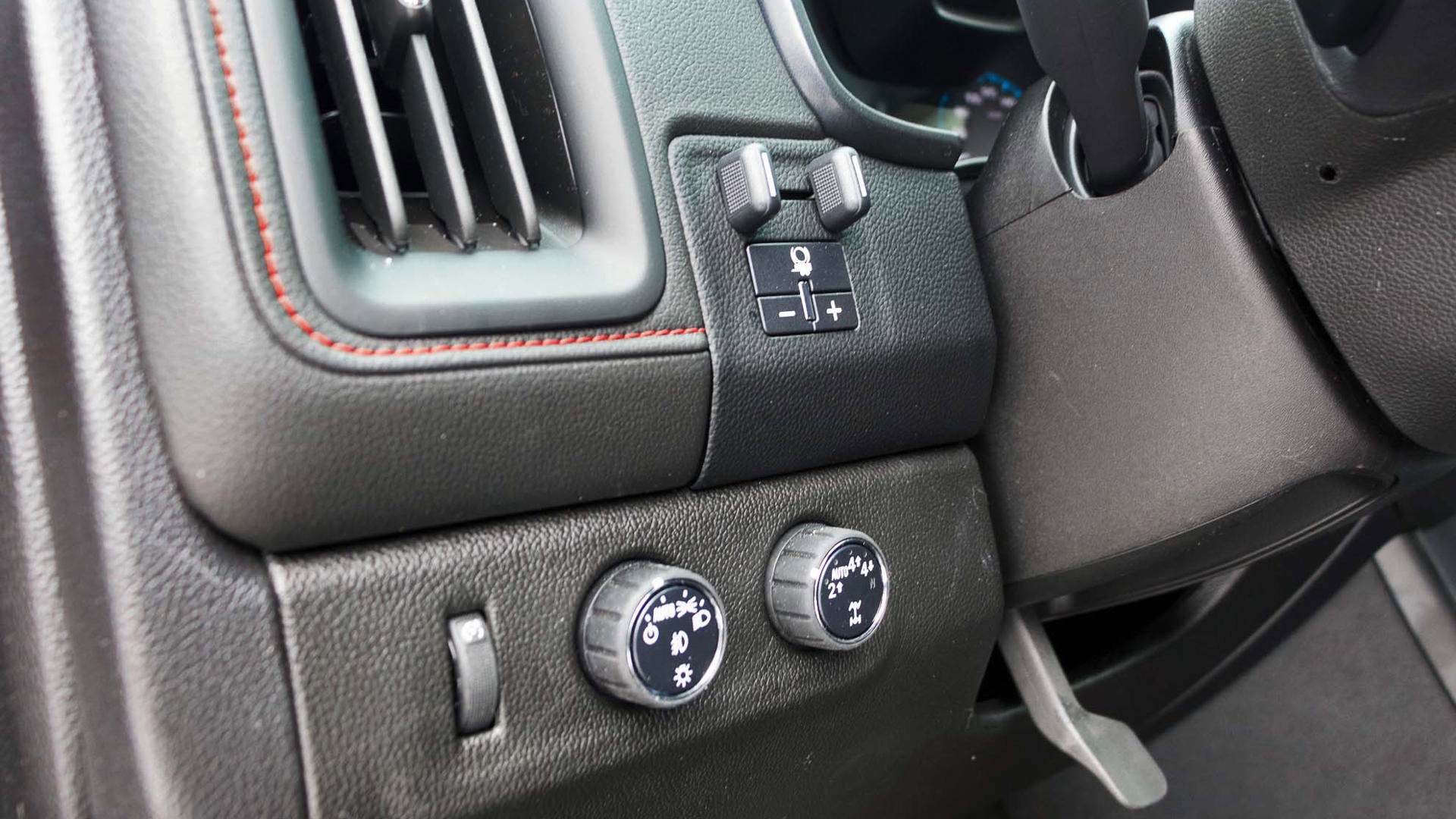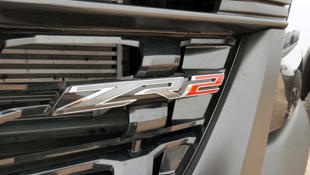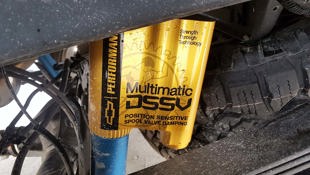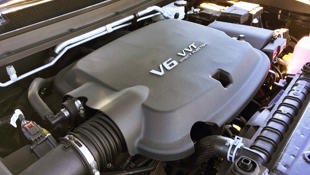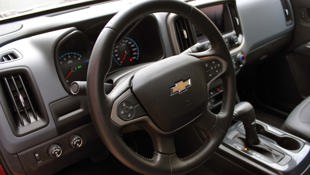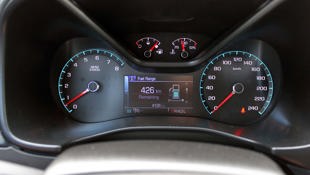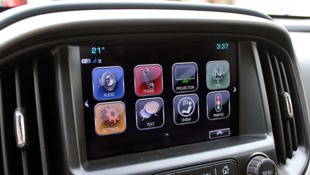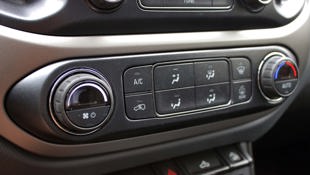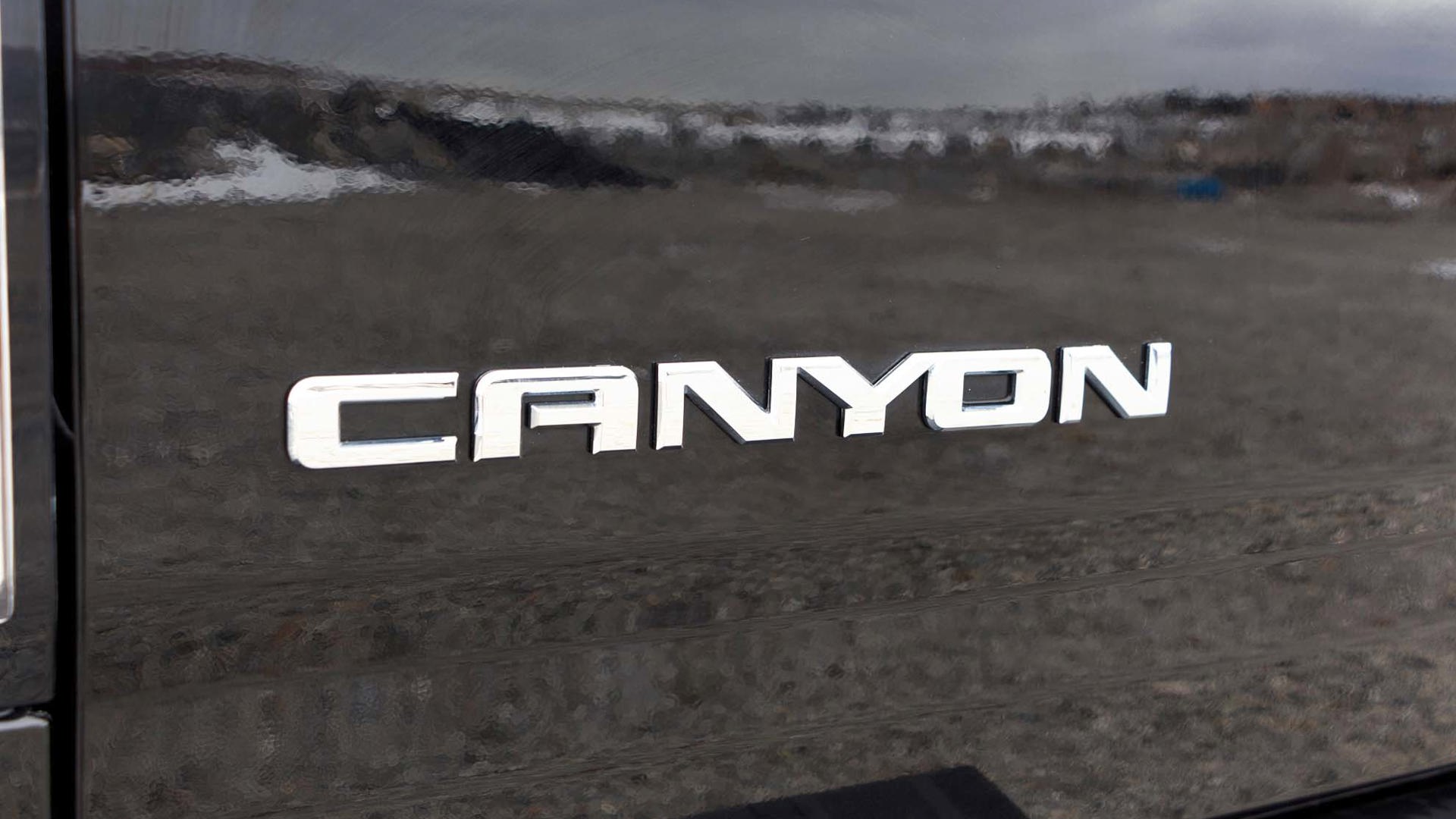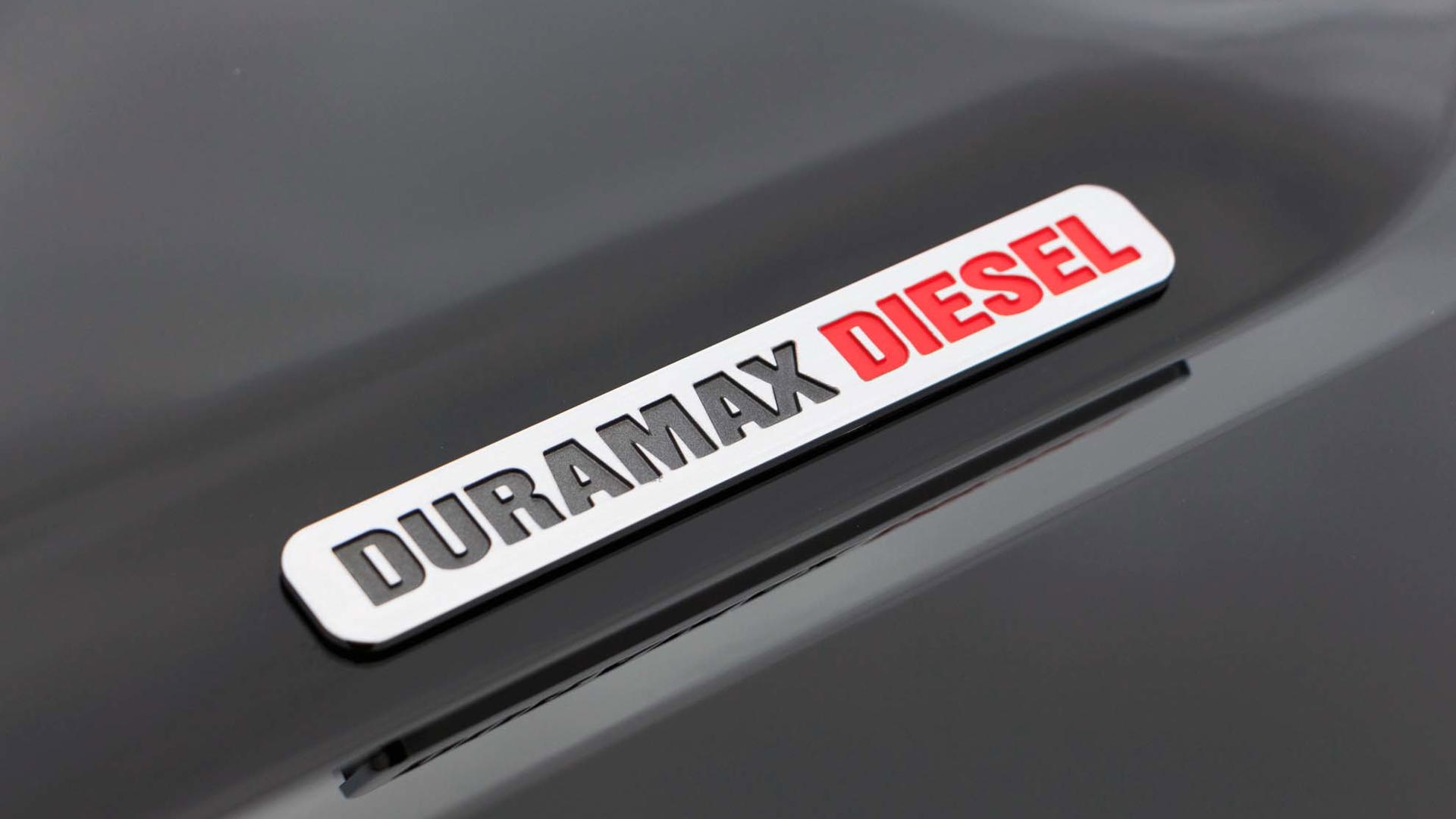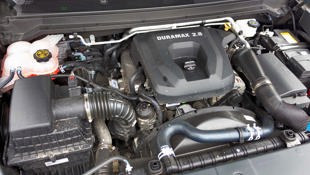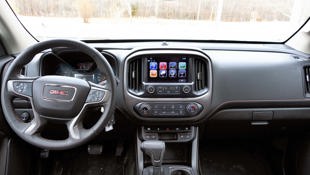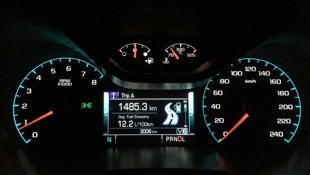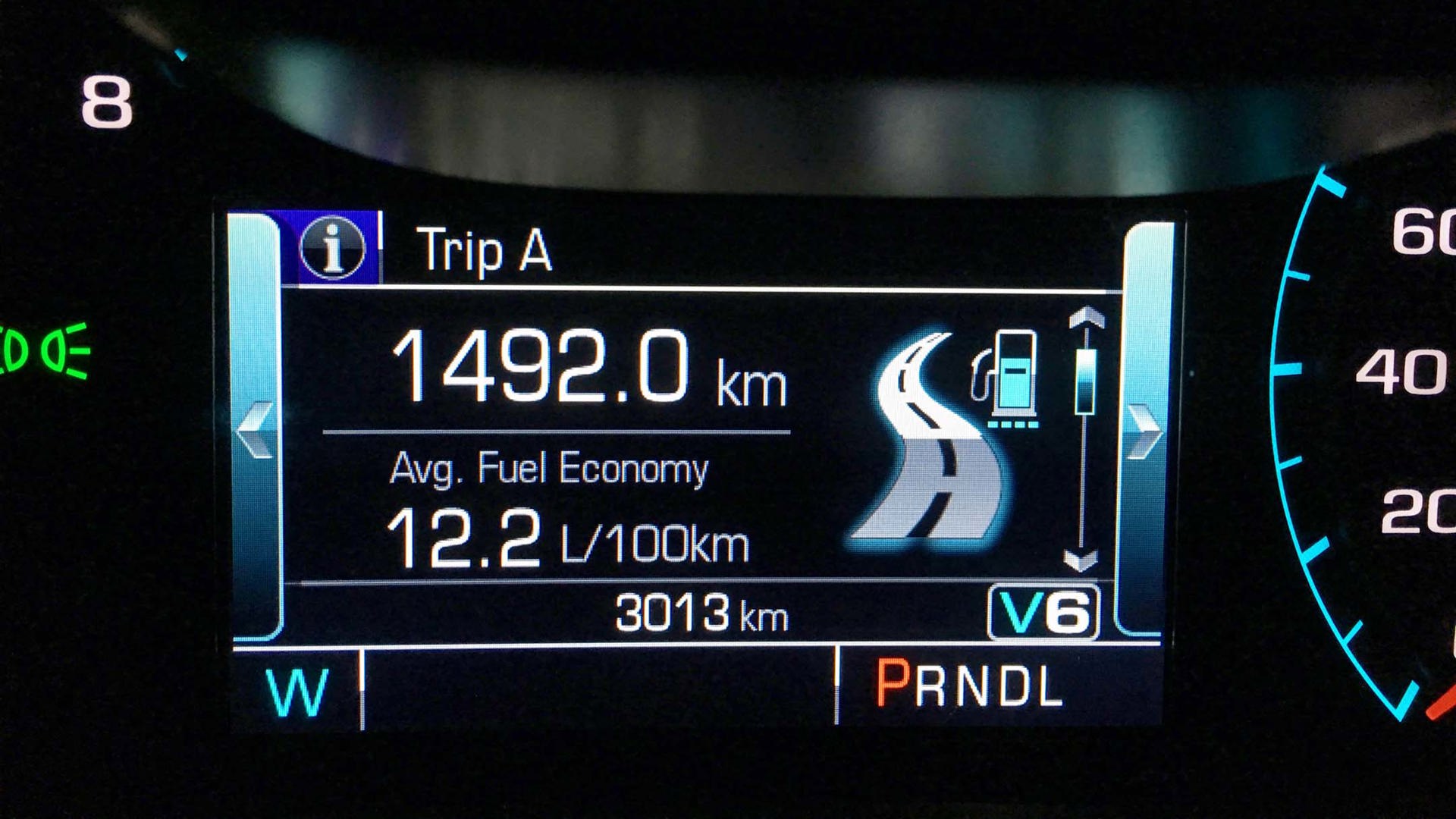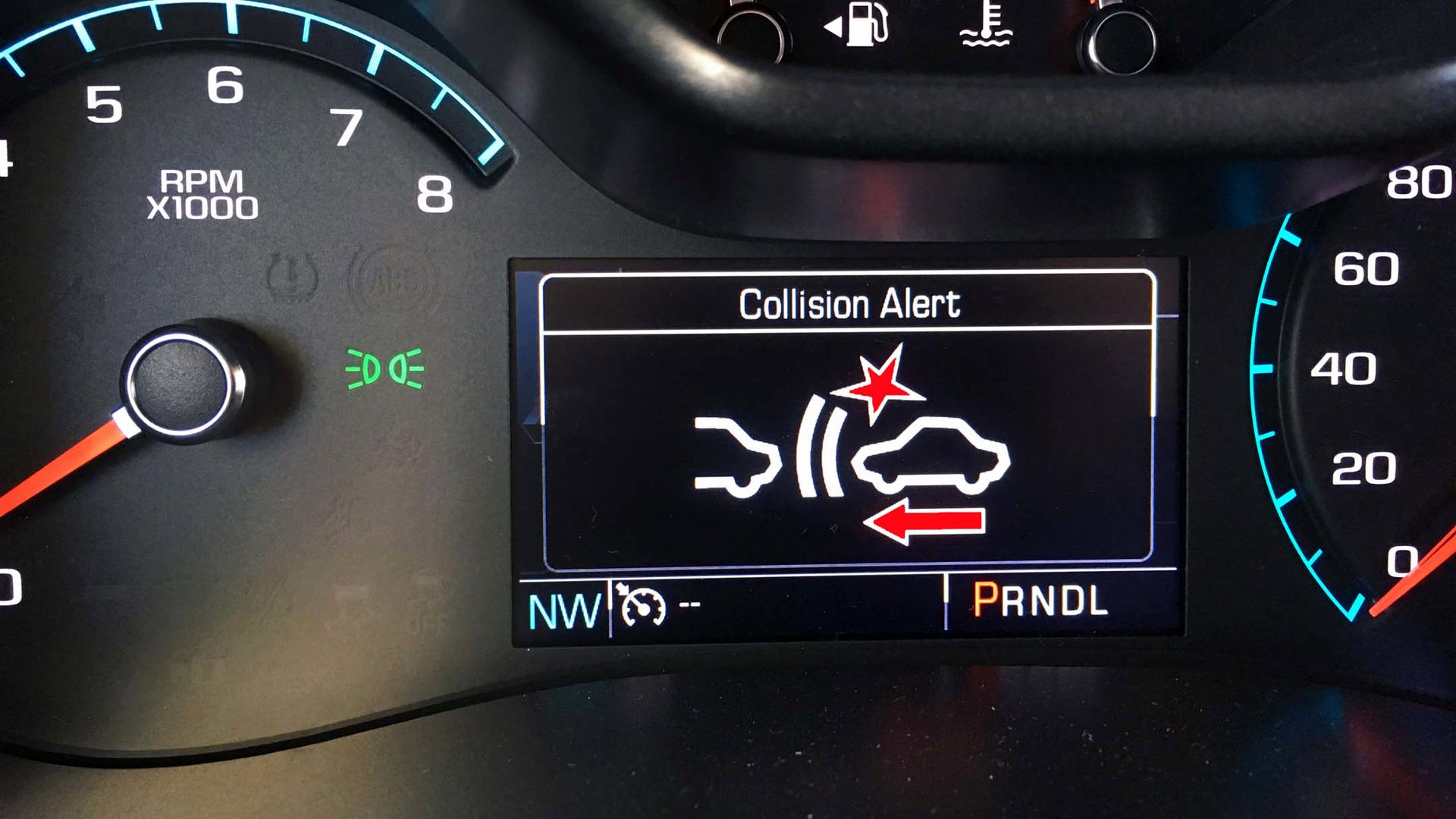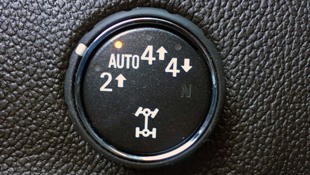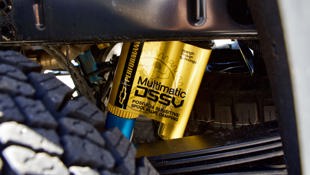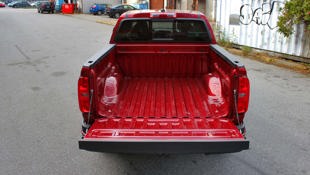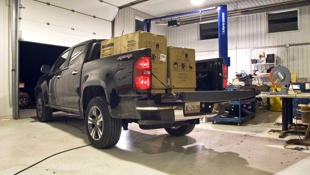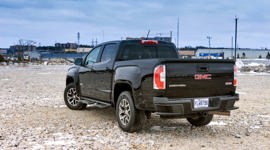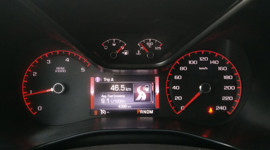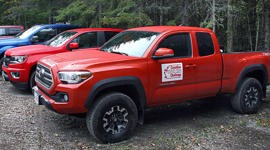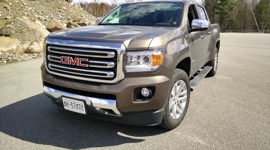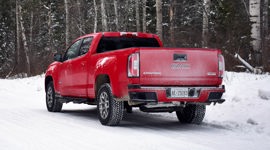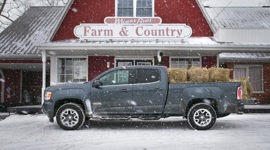Vehicle Type
Driving position, available performance from the V6 engine, and all-season traction.
Pickup Truck
History/Description
The second generation of GM’s modern small pickups hit dealer lots in early 2014 for model year 2015. Though the recently launched Silverado and Sierra were in the pickup truck spotlight at the time, the latest generation of the GMC Canyon and Chevrolet Colorado came online shortly thereafter, riding a new platform, packing new engines and technologies, and catering to a shopper after proven pickup expertise in a package that was easier on fuel, easier to park, and bigger on manoeuvrability than its larger siblings.
Numerous model grades were available, as were various powertrains, body styles, and trim packages to set these smaller GM trucks up to suit a wide range of needs and tastes.
Feature content included OnStar with smartphone-ready MyLink, full multimedia connectivity, standard rear bumper-corner steps, up-level audio systems and more. Look for an 8-inch colour touch-screen, forward collision mitigation, lane-departure alert, a standard back-up camera, full power accessories, automatic lights and climate control, remote start and more.
Engines/Trim
This generation of Colorado/Canyon ran a 2.5-litre four-cylinder engine as standard, while an available 3.6-litre V6 was on offer for shoppers after more power. Each engine gets direct injection and variable valve timing (VVT) for fuel-efficient performance. A six-speed automatic is teamed with each, and a six-speed manual was available on certain work truck models. The four-cylinder engine turned in around 190 horsepower, while the V6 generated about 300.
A diesel engine was available as well, though its late availability and low sales volume means reliability information is sparse, and that we’ll focus on the gas-powered models.
Properly equipped, towing capacity approached 7,000 lb, and select models got an Eaton locking differential for added traction and reduced need to run the 4x4 system in the snow.
What Owners Like
The driving position, available performance from the V6 engine, and all-season traction on 4x4 units were all highly rated by owners of this generation Colorado and Canyon. Other owners appreciate the high-tech suite of advanced feature content, including OnStar and the smartphone-enabled MyLink system. The 4x4 Auto setting is fast-acting and provides added confidence in winter conditions, and most owners note good ride quality on smoother road surfaces.
What Owners Dislike
Some owners wish for a smoother rough-road ride on certain models, in particular, those with the tougher all-terrain suspension setup. Other complaints include a hard-to-read 4x4 mode dial that’s partially blocked from view by the steering wheel, higher-than-expected levels of wind and road noise, and an awkward lump beneath the rear seat floor, which limits cargo carrying versatility.
Pro Tip: Get It in the Air
When buying any second-hand pickup truck whose history you’re unfamiliar with, a full on-the-hoist inspection by a licensed technician is a great idea to help avoid buying someone else’s headaches. In addition to the usual checks for the condition of the tires, brakes, suspension, and other components, this inspection can quickly reveal signs of damage, rust, or other problems caused by neglect, or possibly, by abuse in an off-road setting.
Further, if the service history of the truck you’re considering is unclear, consider a full fluid change and tune-up for added peace of mind and increased long-term longevity.
Pro Tip: Know Your Options
If it’s in your budget, opt for a 2017 or newer unit to take advantage of expanded feature content availability, a revised V6 engine with additional fuel-saving technology, and a new, fuel-saving eight-speed automatic transmission.
The Test Drive
Check the Tech
If you’re attracted to the Colorado or Canyon for the high-tech, smartphone-linked feature content, be sure to spend a few minutes going through each and every one of its features to confirm proper operation. Connect your phone via Bluetooth, confirming media streaming and phone call capabilities. Ask the owners to show you the MyLink application on their smartphone (if set up), confirming that it’s able to remotely operate the door locks, engine starter, and to provide monitoring of fuel levels, tire pressures, and more. You’ll also want to try and connect a call to OnStar, confirming that the system works as expected to connect to an advisor (active subscription required). If available, try the OnStar navigation system, confirming that the OnStar call centre is able to locate the vehicle on GPS. If that’s not the case, the GPS transmitter built into the vehicle may need to be replaced, though this problem is very rare.
If you’re set on using the OnStar / MyLink remote application for remote engine starting and have any trouble, read this discussion. Some tips and pointers are presented to help set the vehicle’s smartphone-enabled remote-start system up if any difficulty is experienced.
Check the Heater
Confirm that the truck you’re considering is able to provide useful, powerful heat to the cabin when requested, at a range of temperatures. If that’s not the case, or if the heat seems to be weak or non-functional, further investigation is required. In some cases, a bad thermostat is the culprit, and this is an easy fix. In other cases, the problem lies with the blend doors, blend door actuators, or blend door motors, which are responsible for controlling the blending and distribution of air through the climate control system.
Here’s some more reading. And some more. And some more. Note that this problem looks more common on earlier units of this generation truck.
It’s unclear whether GM extended the warranty on parts affected by this problem, though a Technical Service Bulletin (TSB) was issued to dealers to help diagnose and repair heat-related issues more quickly. In most cases reported by owners, the heat simply fails to work at all, or works on random occasions. If you experience this issue, get in touch with your local dealer right away to have it addressed – noting that the necessary repairs can be pricey if not covered by warranty.
Check the Features
Though reports of trouble or failure are too random and sporadic to draw many conclusions, shoppers are also advised to confirm proper operation of the back-up camera system, all advanced safety features, the cruise control, the parking radar, and all steering-wheel-mounted controls. If any of the above features or systems isn’t working properly, now’s the time to find out.
“Service 4x4” Message
Some owners have reported the appearance of a concerning “SERVICE 4x4” system message, which may appear in the instrument cluster display screen, often at lower mileage on newer units. The issue, as outlined here, is somewhat common but poses minimal cause for alarm. Typically, this is an electronic problem, not a mechanical one – and the fix is a simple reprogramming of the computer that controls and monitors the 4x4 system, often alongside a repair or replacement to a switch that’s attached to the transfer case.
Any dealer should be able to address this problem quickly – though be sure to have any such warning signs investigated as soon as feasible, in case they’re a more serious issue that may be covered by warranty.
Transmission
Some owners of newer used Canyon and Colorado models with the eight-speed automatic have reported problems including rough shifting, or, more commonly, rough shifting that’s accompanied by a marked delay when engaging drive or reverse, and especially when the vehicle has been sitting, un-driven, for an extended period of time. A shudder at certain speeds through the driveline may also be noted. Ditto general clumsiness and harsh operation from the transmission.
Various causes are listed, including corrupted transmission control software, the need to install a revised torque converter, or the need to entirely replace the eight-speed transmission. As this transmission came online for model-year 2017, any issues experienced with it will likely be covered by the factory powertrain warranty. Should the issues present themselves towards the end of the warranty period, be sure to have them documented by a dealer straight away to help speed possible warranty claims. Note that failure by yourself (or a past owner) to follow all factory-prescribed maintenance to a T may compromise or void powertrain warranty coverage.
If you note any transmission trouble as listed above, ask the dealer to inspect the vehicle after reading GM Technical Service Bulletin #16-NA-364 (“delayed engagement after sitting with engine off – clutch slow to fill”). Be on the lookout for the warning signs listed above, and insist on test driving the vehicle only if it hasn’t been pre-warmed or driven recently prior to your arrival.
Listen Closely
Though sporadic in frequency, some owners have reported various problems detectable by way of unwanted sounds while driving. For instance, though reported rarely, a whining or whirring sound from the rear of the truck while coasting at highway speeds may be evidence of a problem with the differential or rear axle, which may require replacement or adjustment. A rattle or buzzing sound or sensation via the steering system may indicate a problem that requires further investigation as well.
Other Useful Checks
Modifications
The average shopper is best to opt for a used Colorado or Canyon that hasn’t been modified by a previous owner. Non-factory electronics, suspension parts, engine parts, or body parts may be fine – though they can also negatively affect durability, fuel mileage, and the vehicle’s lifespan. Some modifications and upgrades may also void parts of the vehicle’s warranty.
Warranty
If you’re buying a newer used copy of the Canyon or Colorado, chances are that a good portion of the vehicle’s powertrain warranty is still in effect. Note, however, that this warranty coverage requires strict adherence to the factory maintenance schedule, outlined in the owner’s manual. Be sure that all items listed in that schedule have been performed, and that proof and documentation is available. You’ll likely need to prove that all maintenance and servicing is up to date if a future warranty claim is required.
Pre-Emptive Tune-Up
If the service history of the truck you’re set on is unclear, budget for a full tune-up, fluid, and filter change, and a full inspection of the vehicle, for maximum peace of mind.
Recalls
Here’s a list of recalls. You can check if any of them apply to the truck you’re considering by entering the VIN on the GM website.
Verdict
This generation of GM’s smaller pickups looks to be fairly solid, and can be bought with relative confidence after a pre-purchase inspection (PPI), and a check of the possible trouble-areas listed above. We’d suggest a lower-mileage copy of a 2016 or earlier model (with the six-speed transmission), or a model with the eight-speed automatic and plenty of remaining and valid warranty coverage.
Crash Test Results
IIHS: results here
NHTSA: 4/5 Stars
